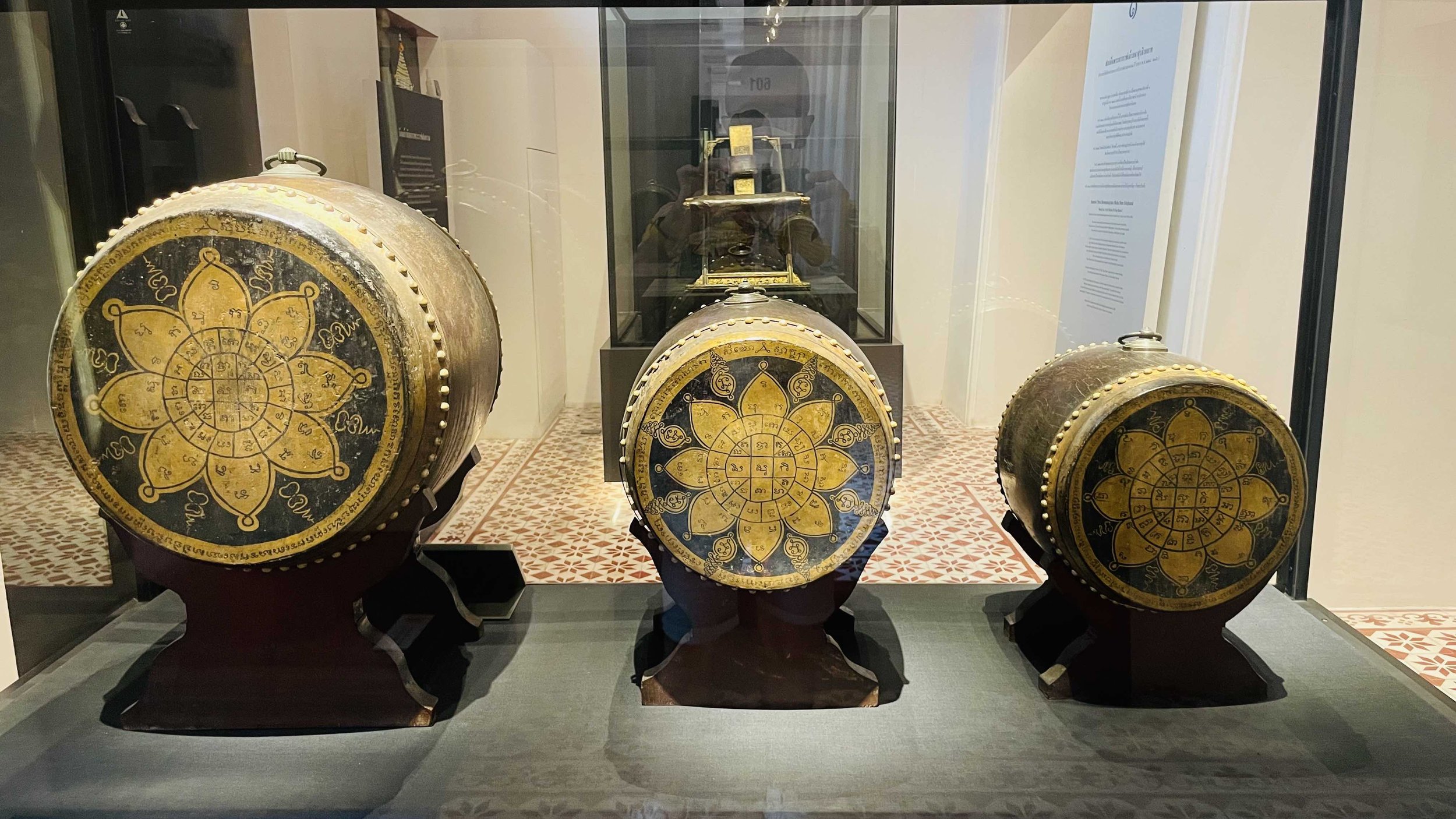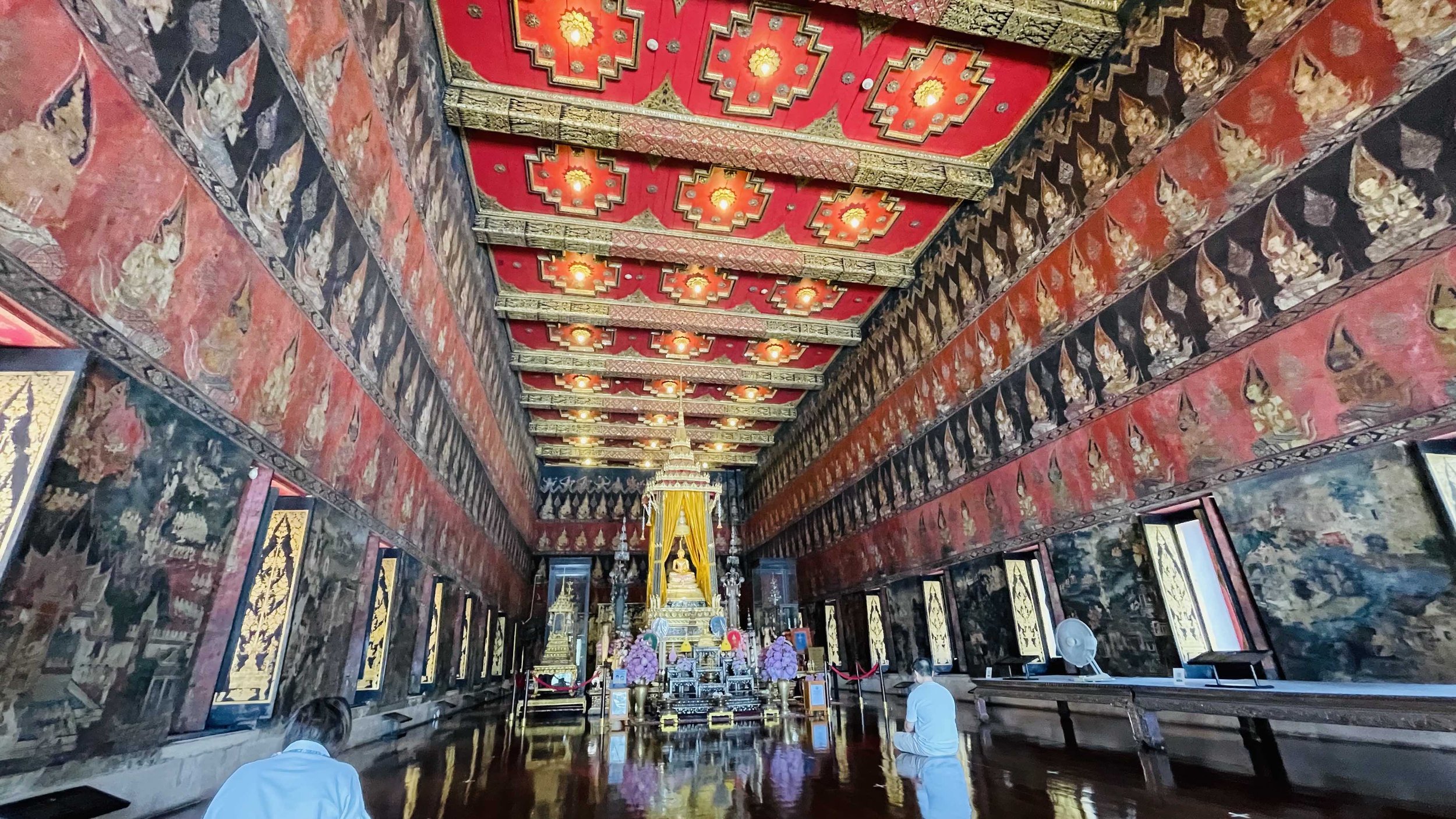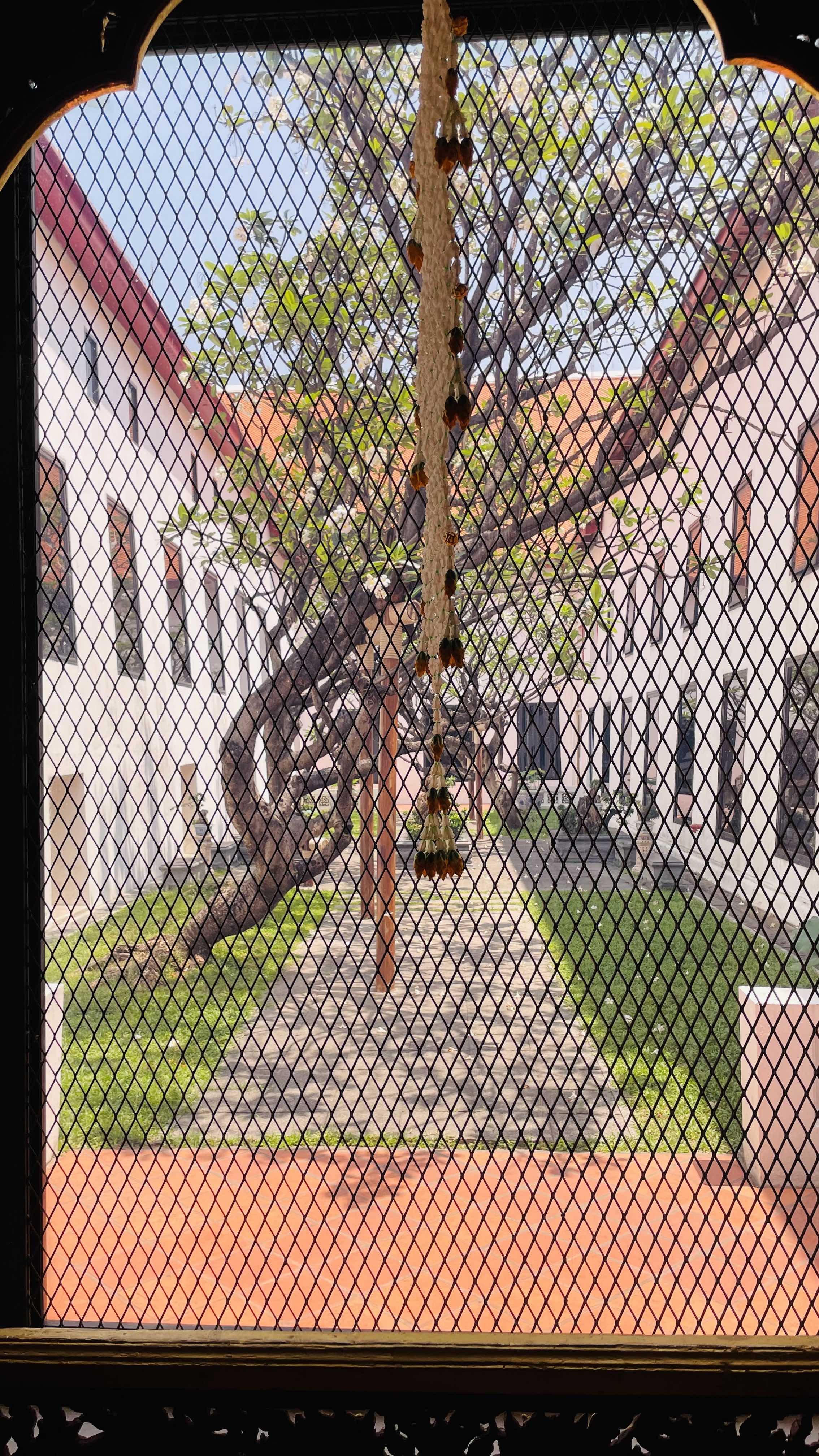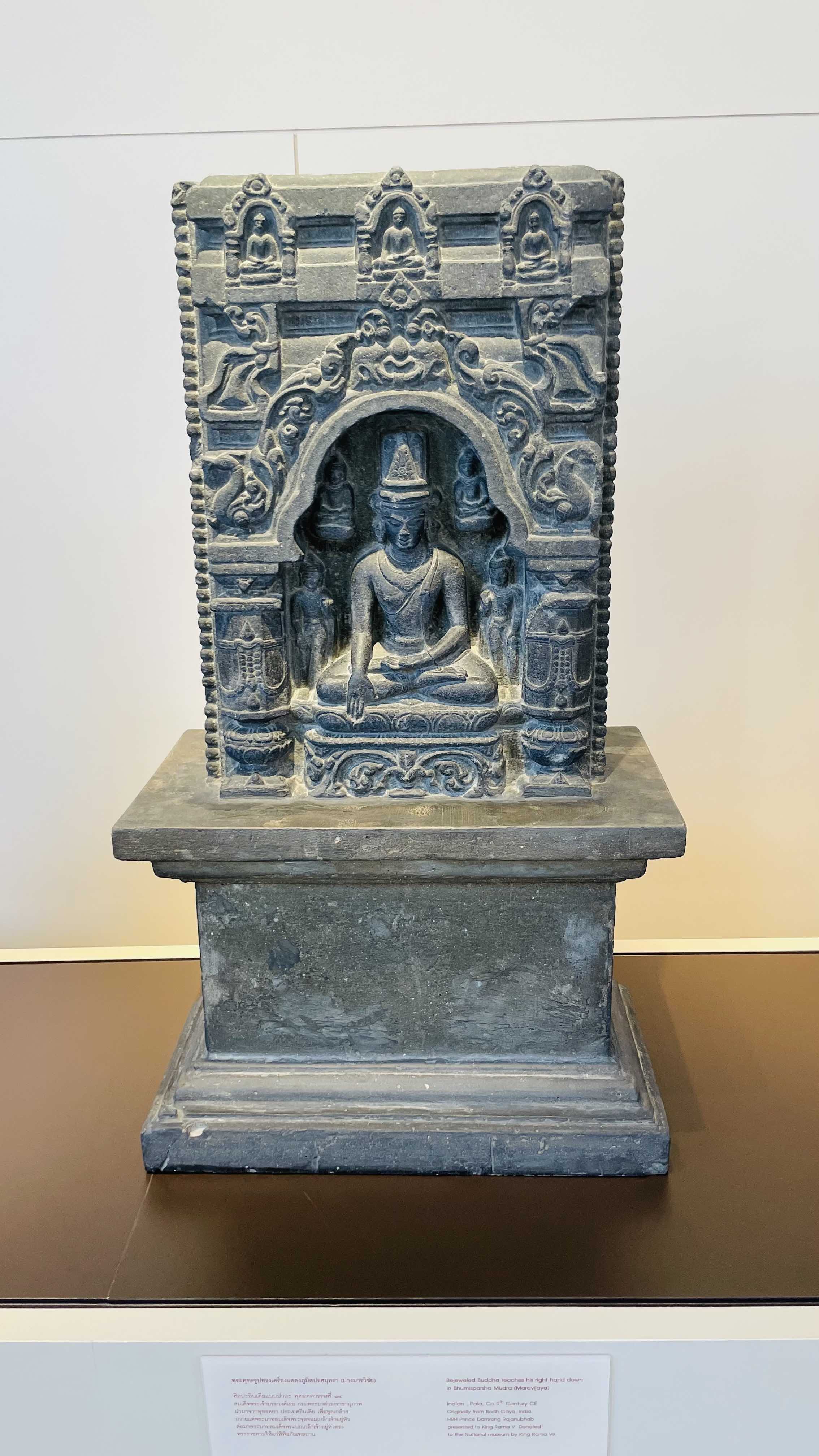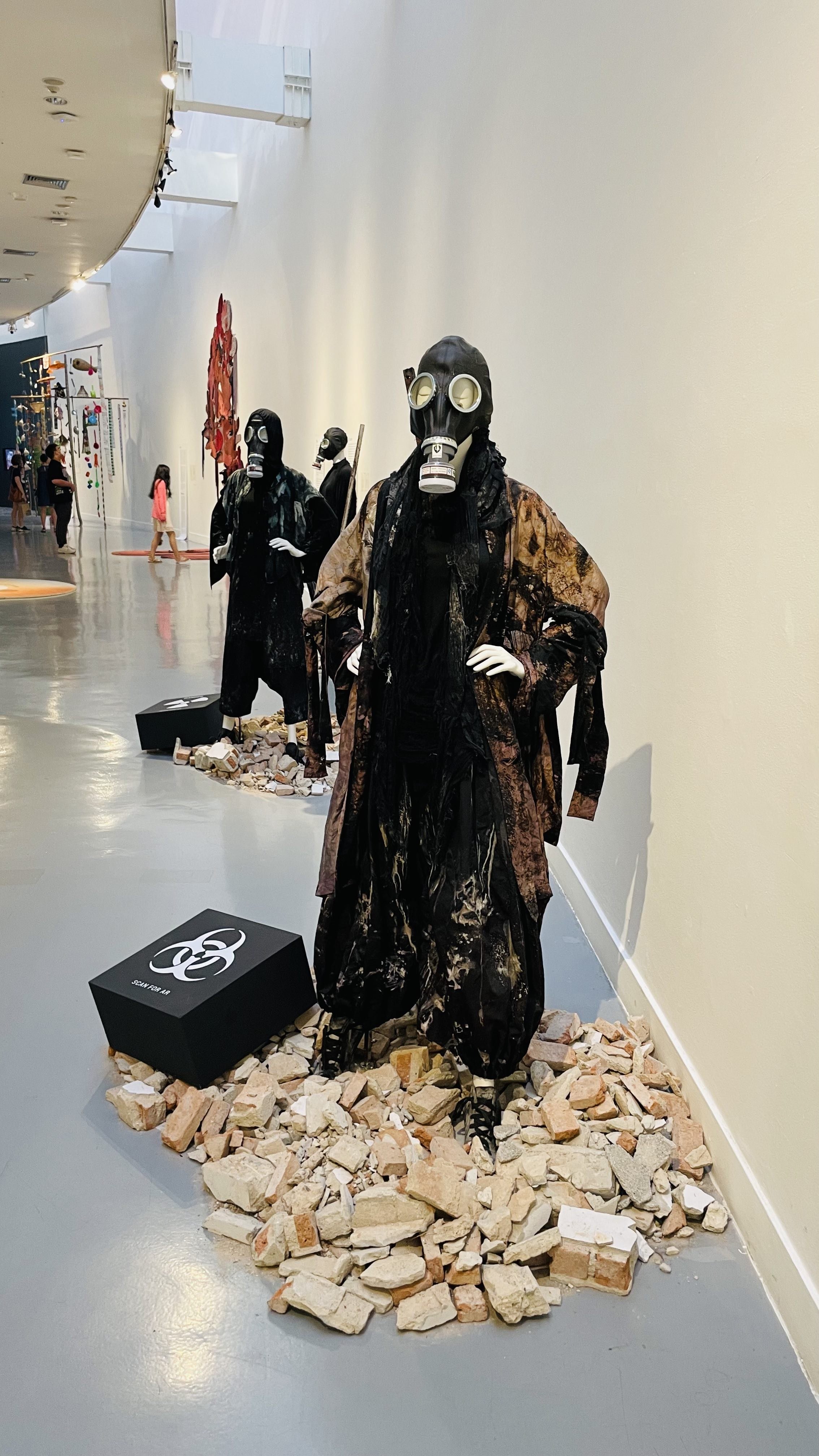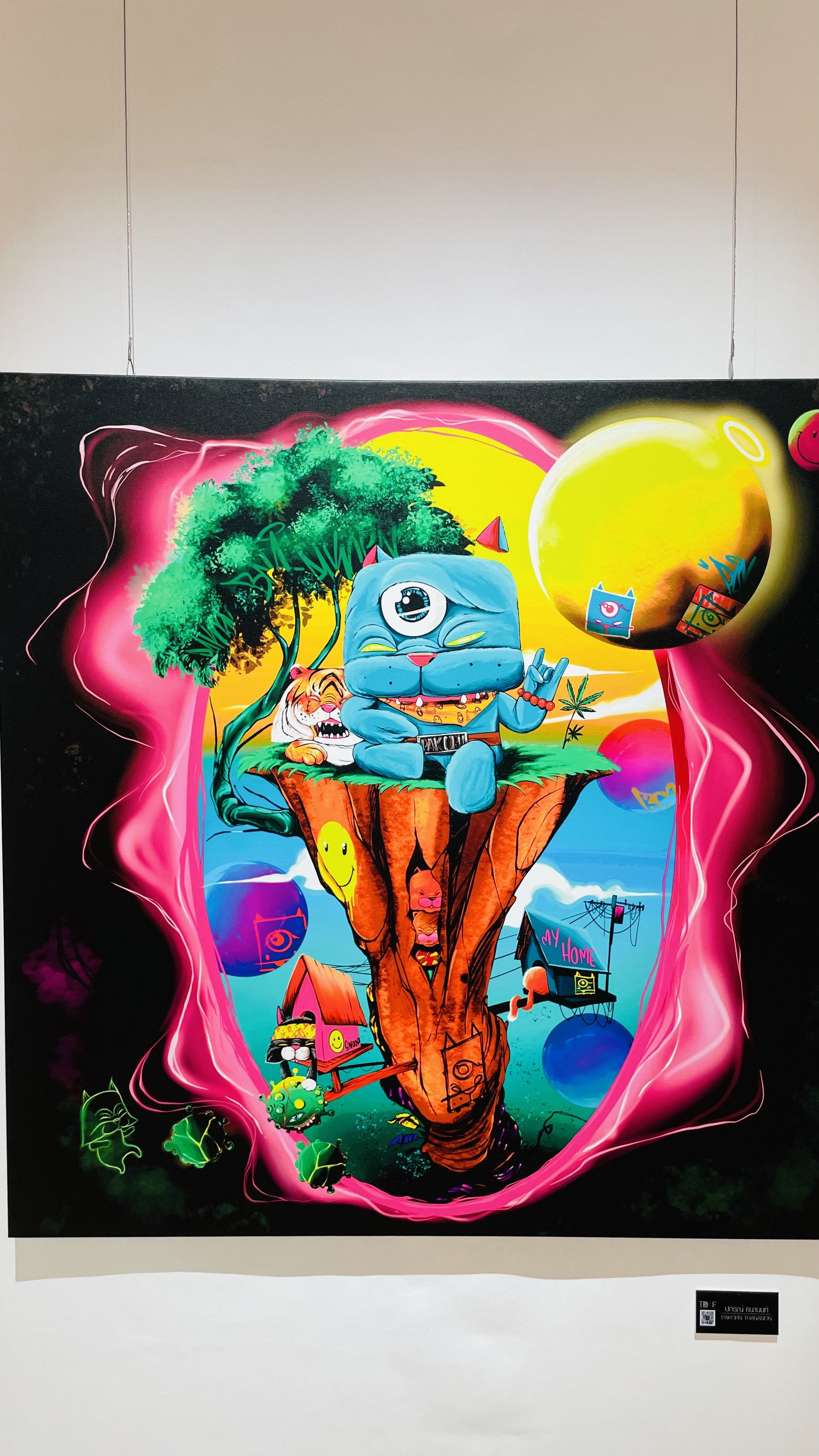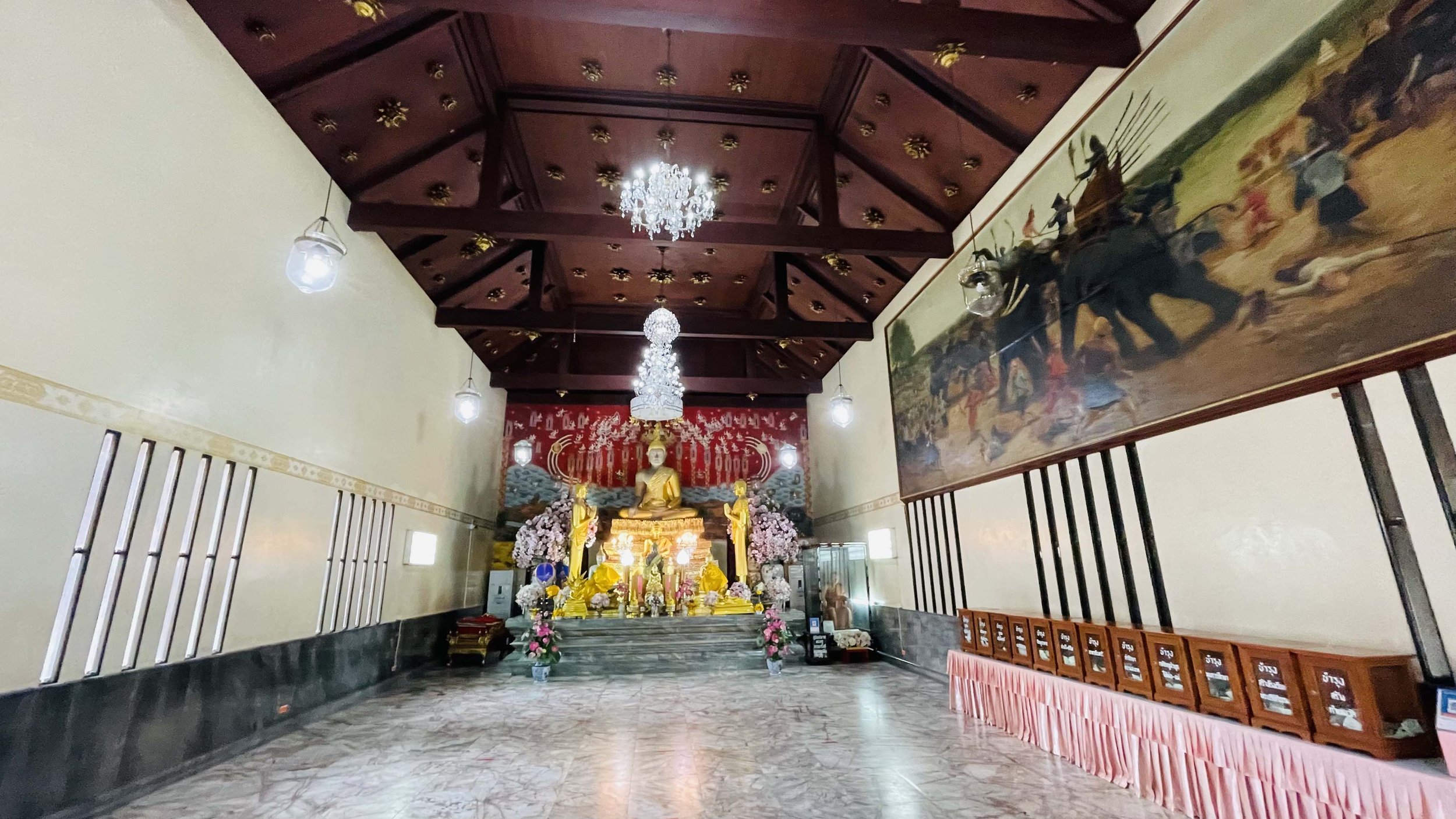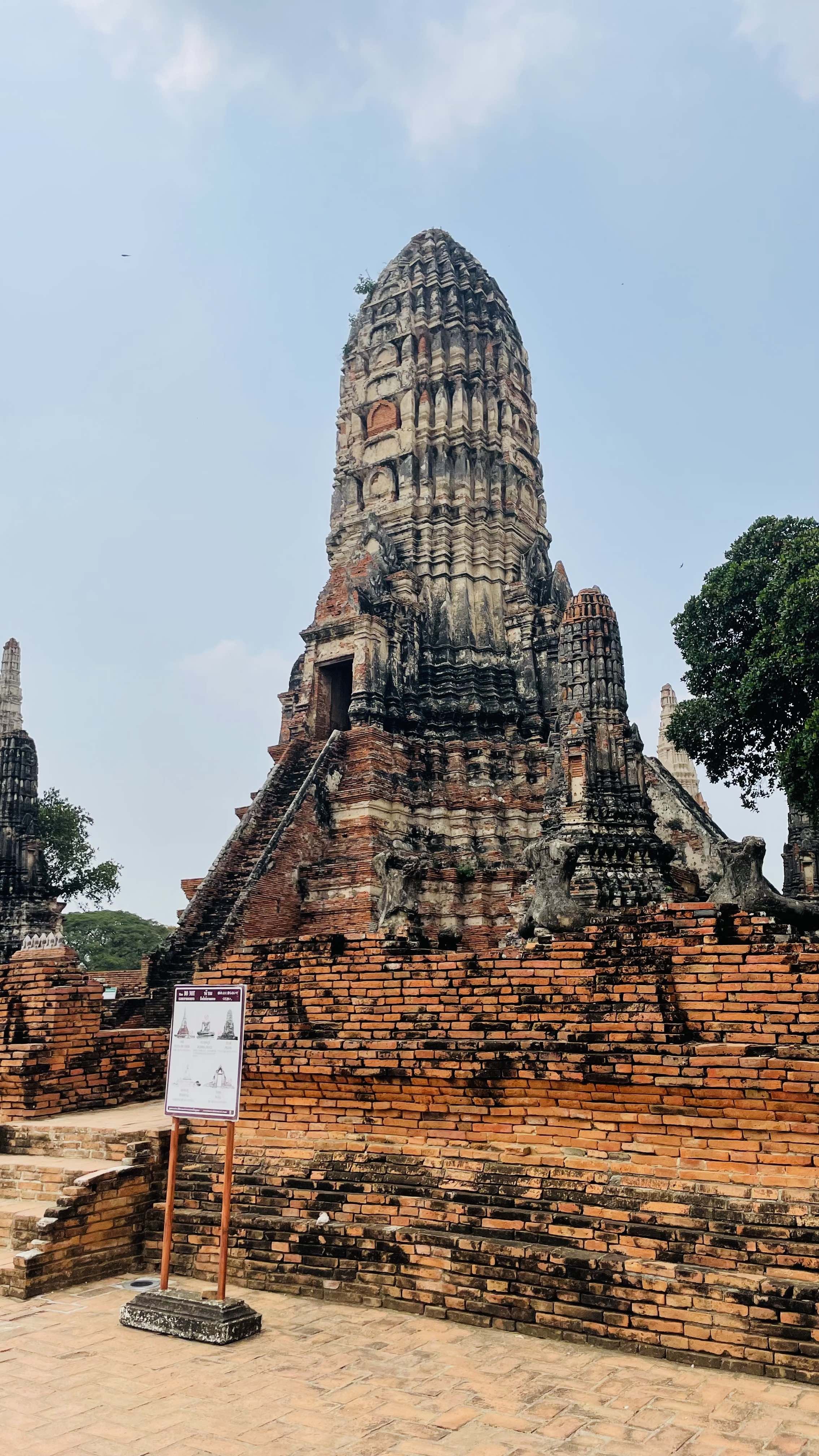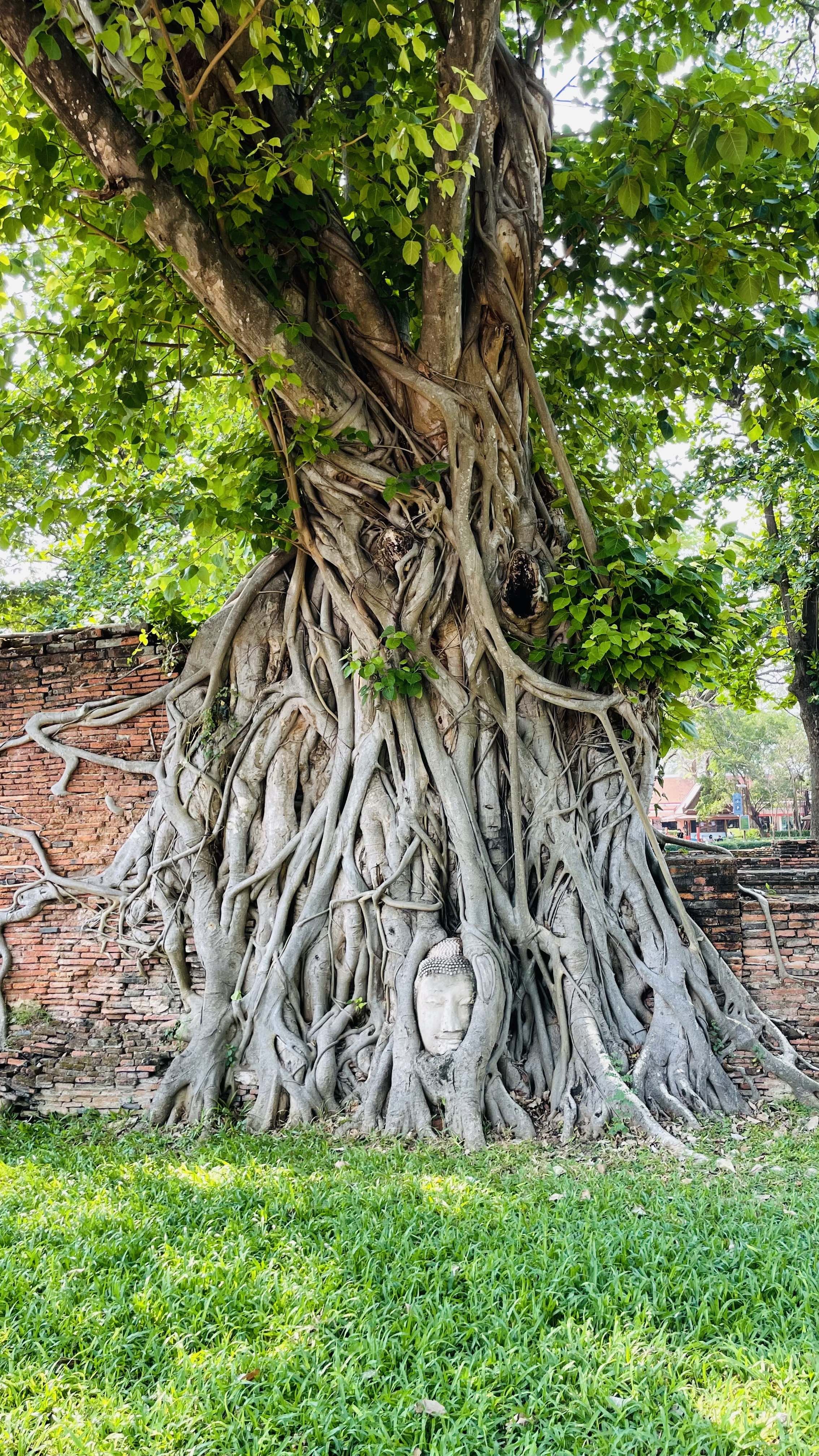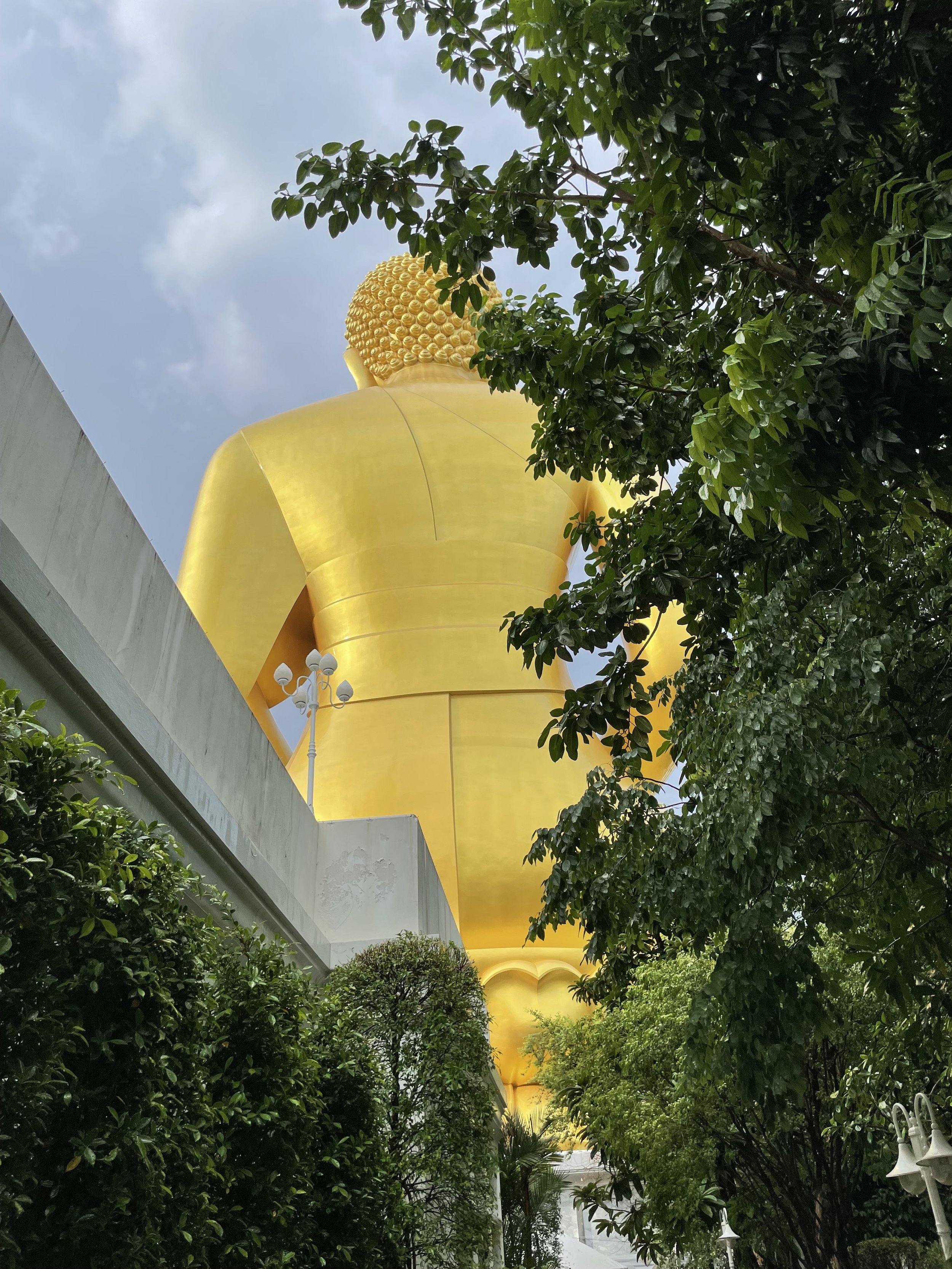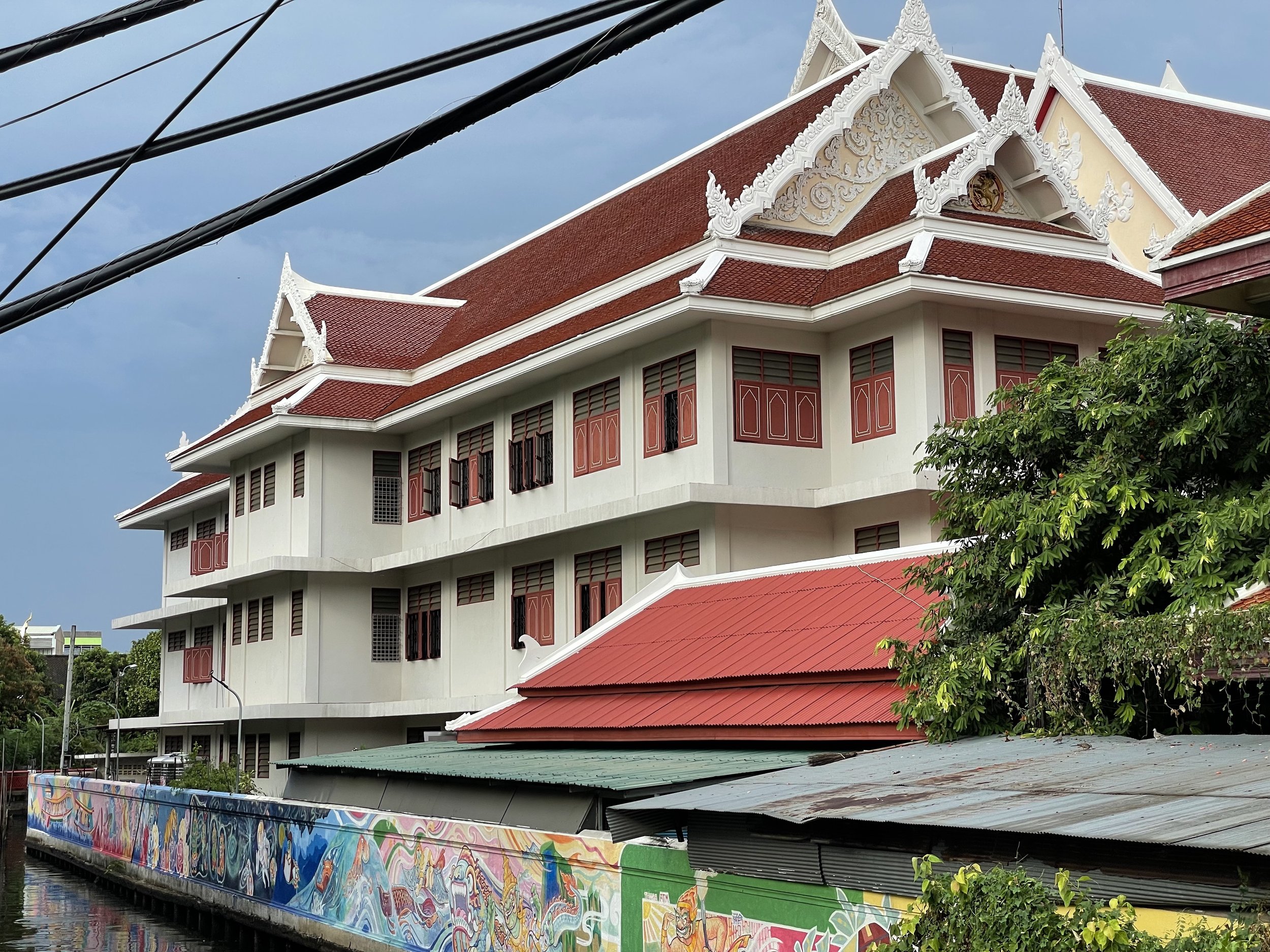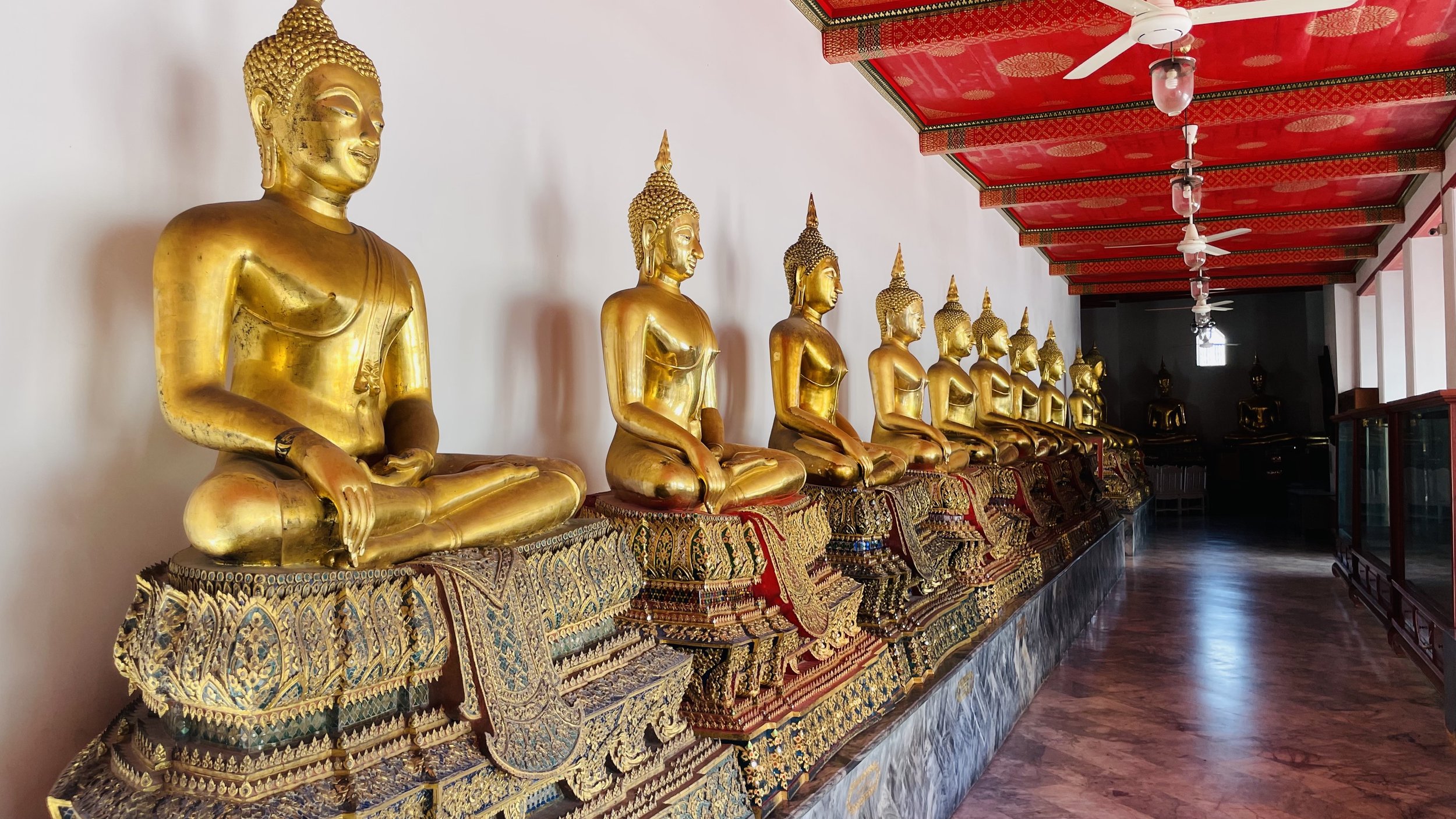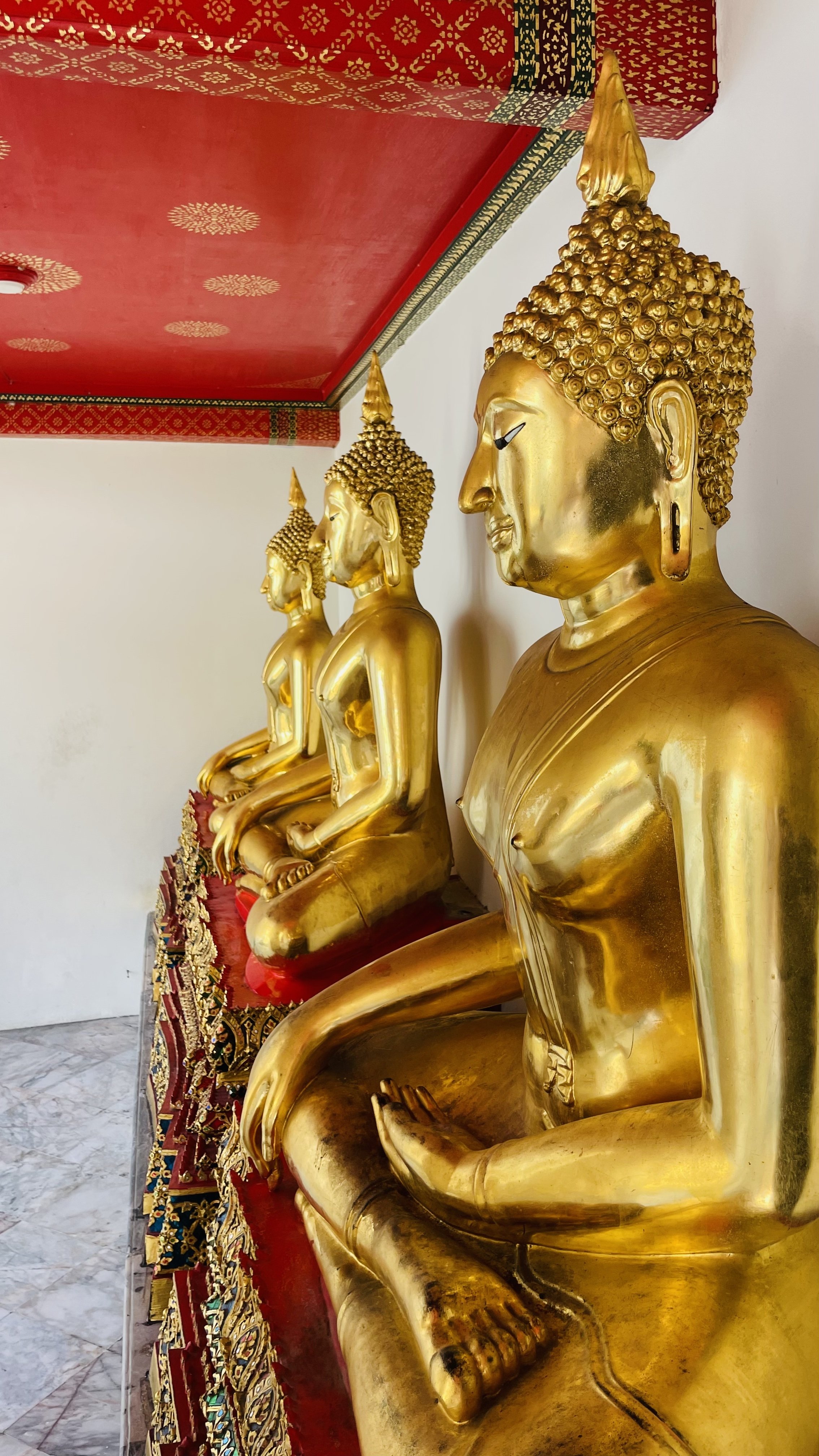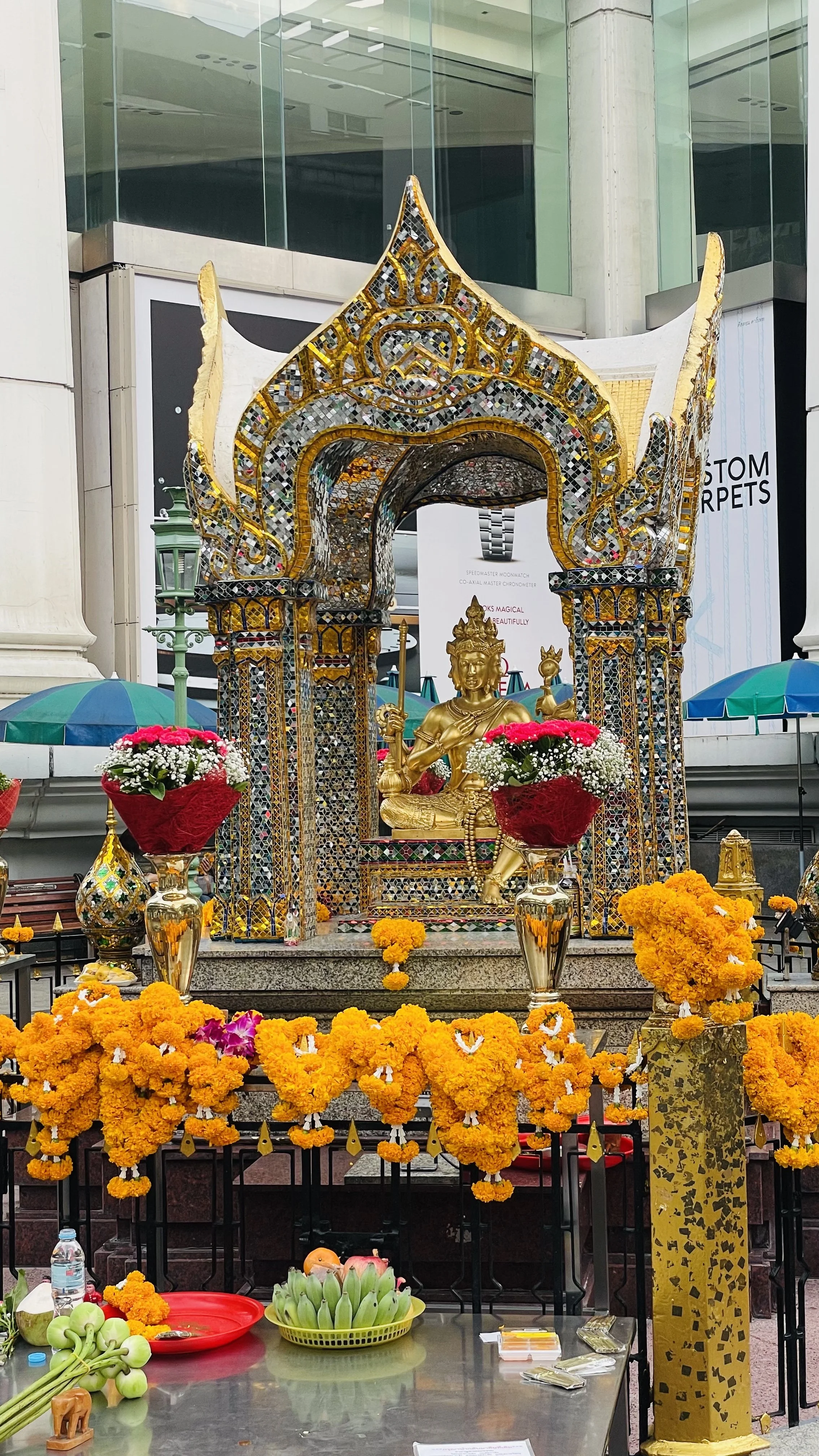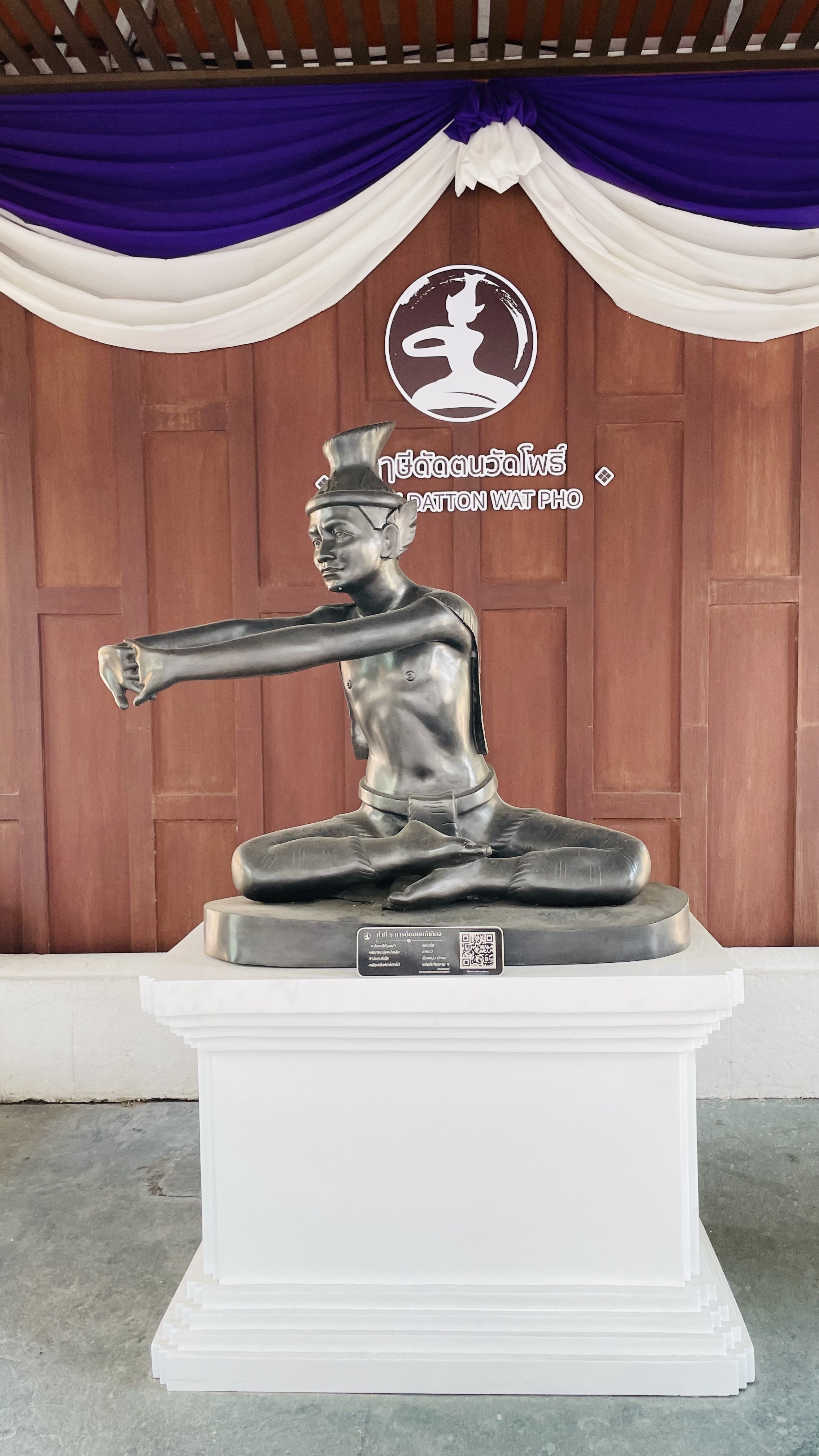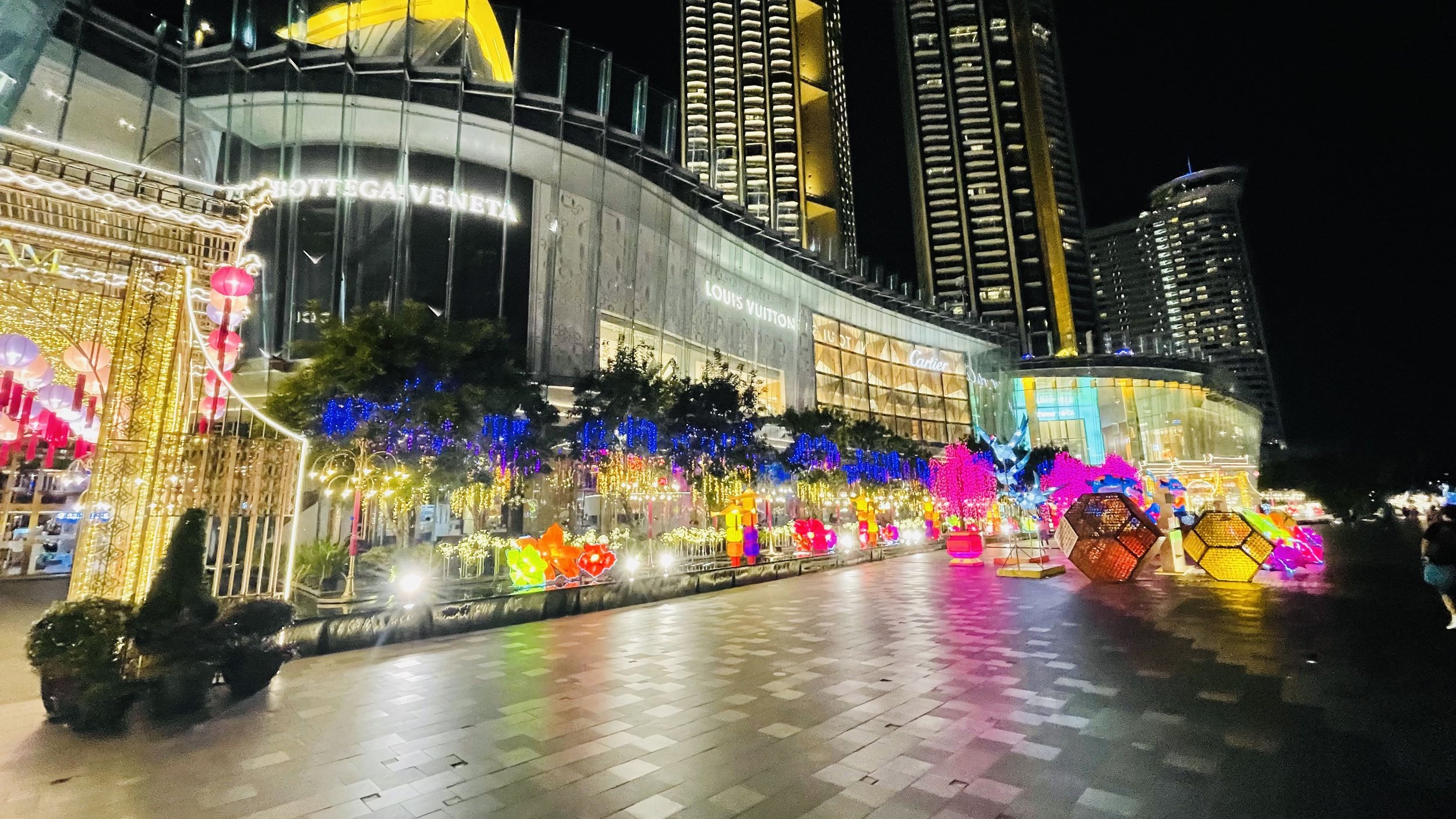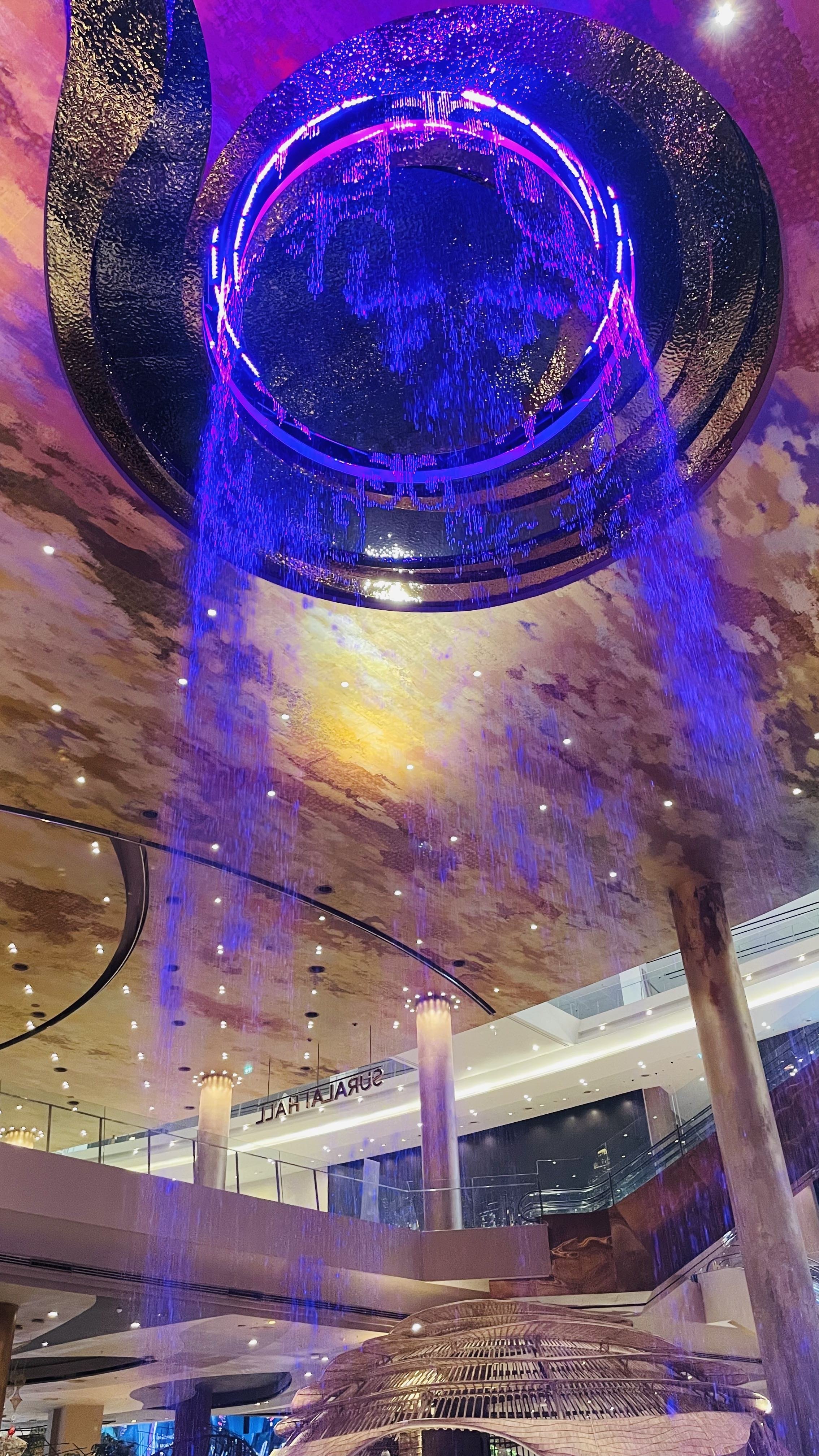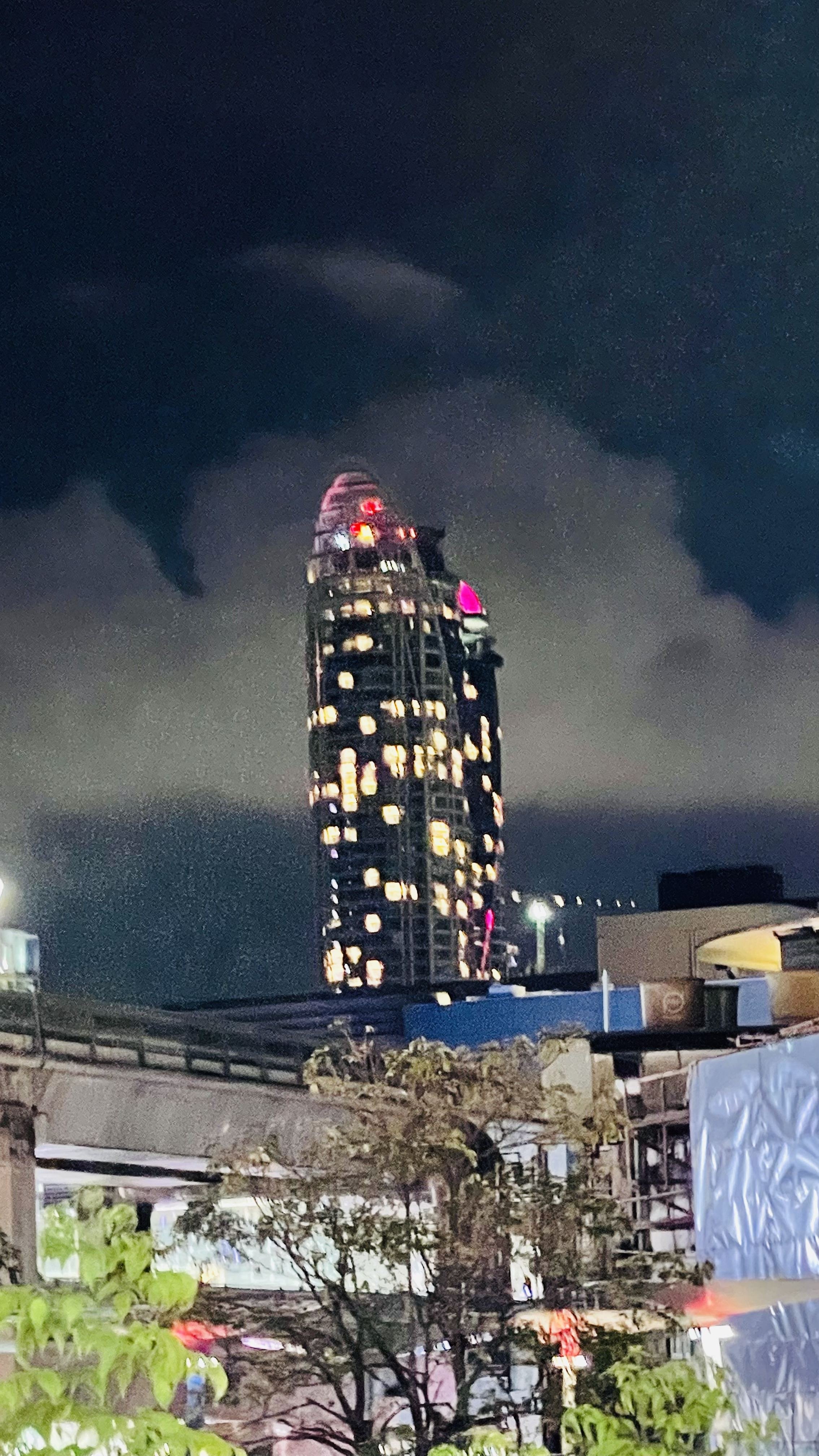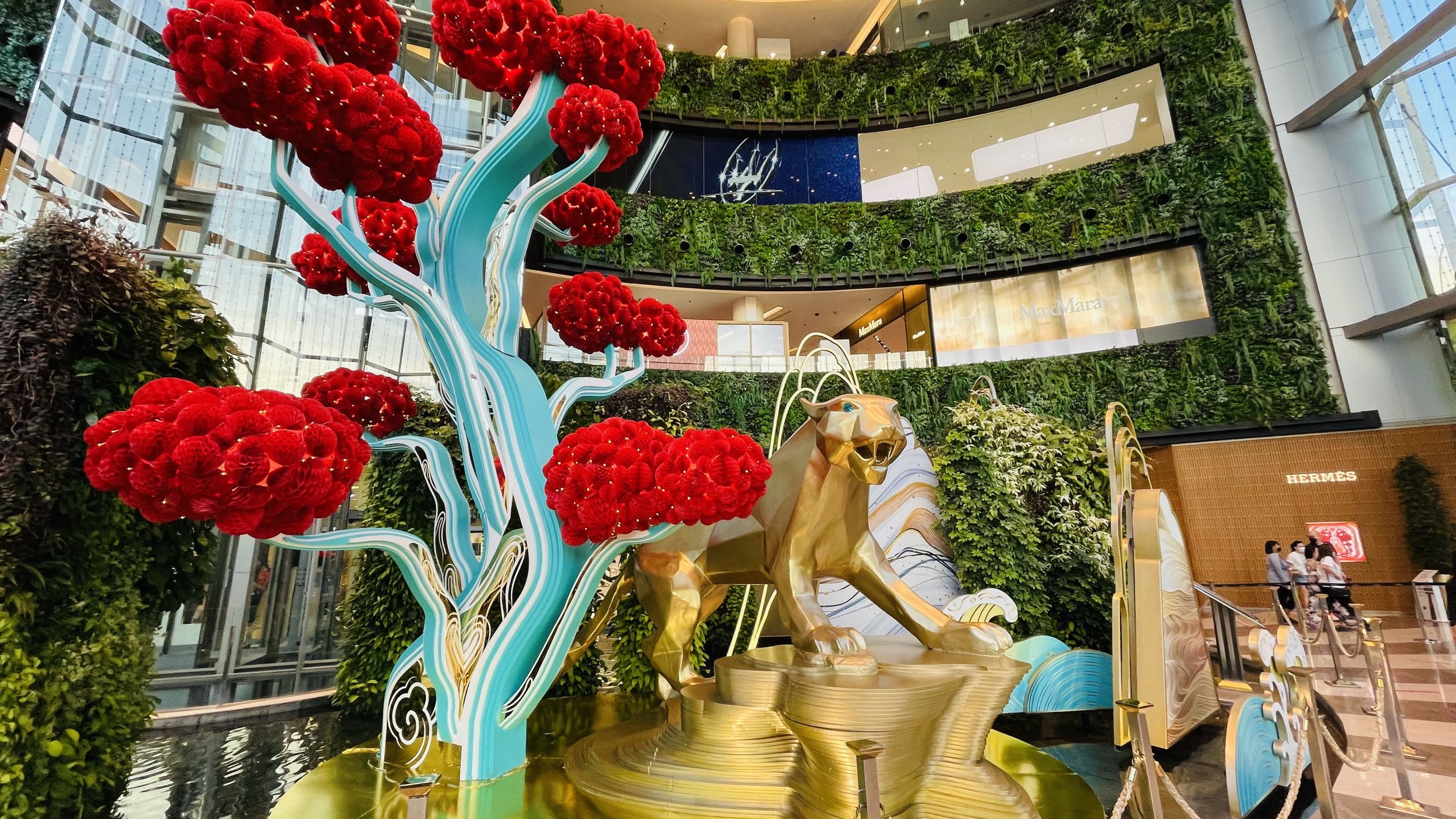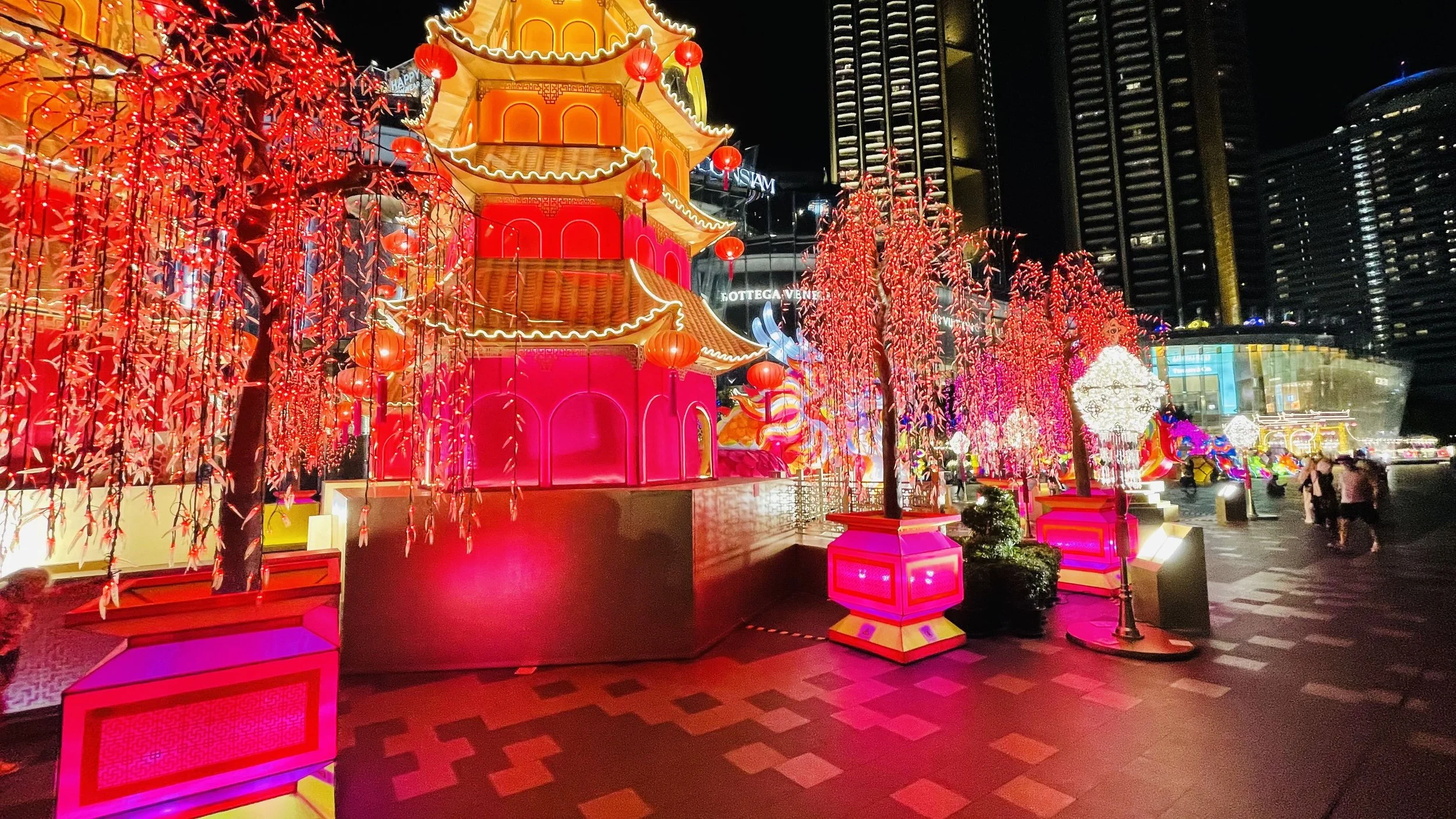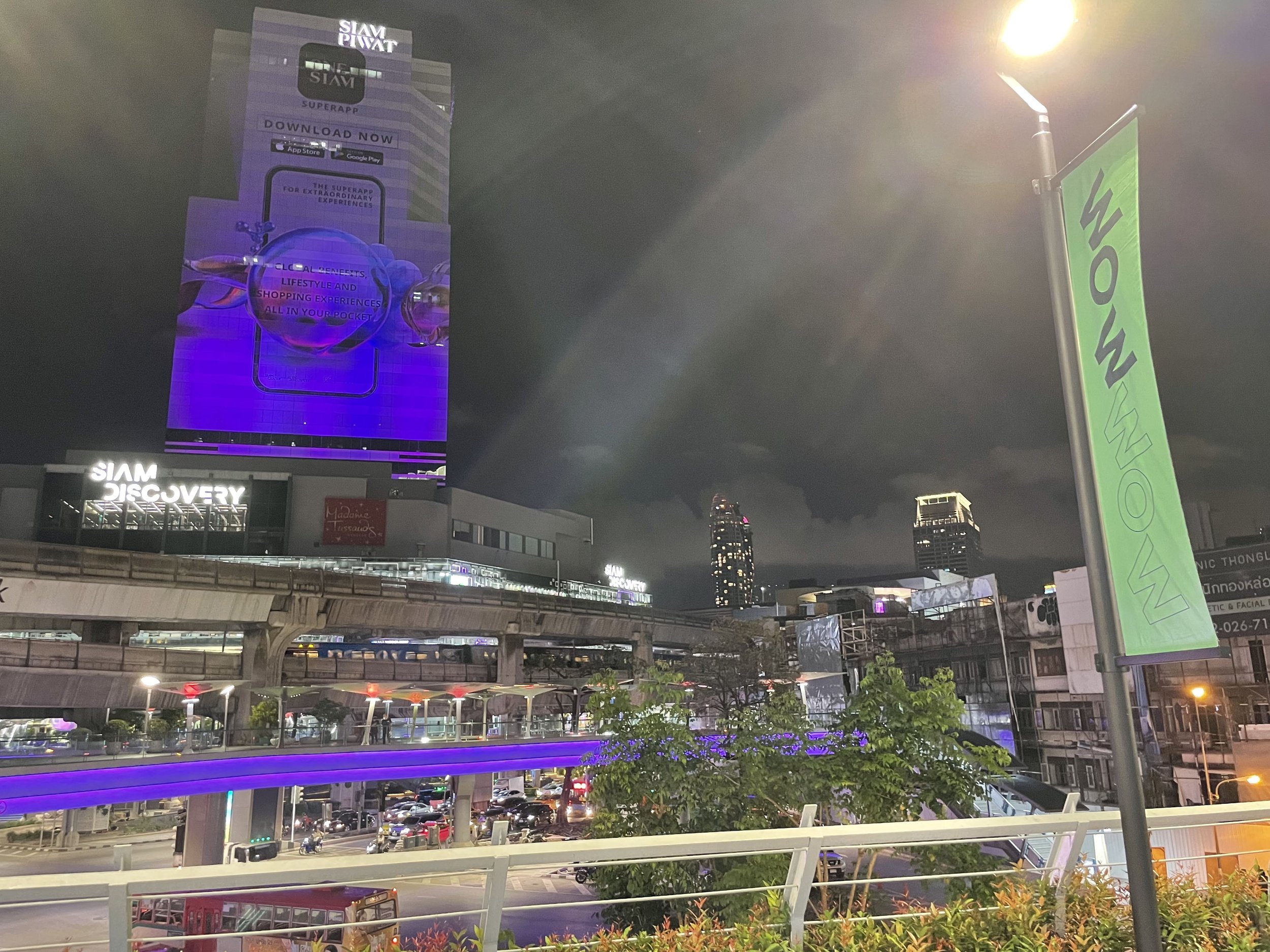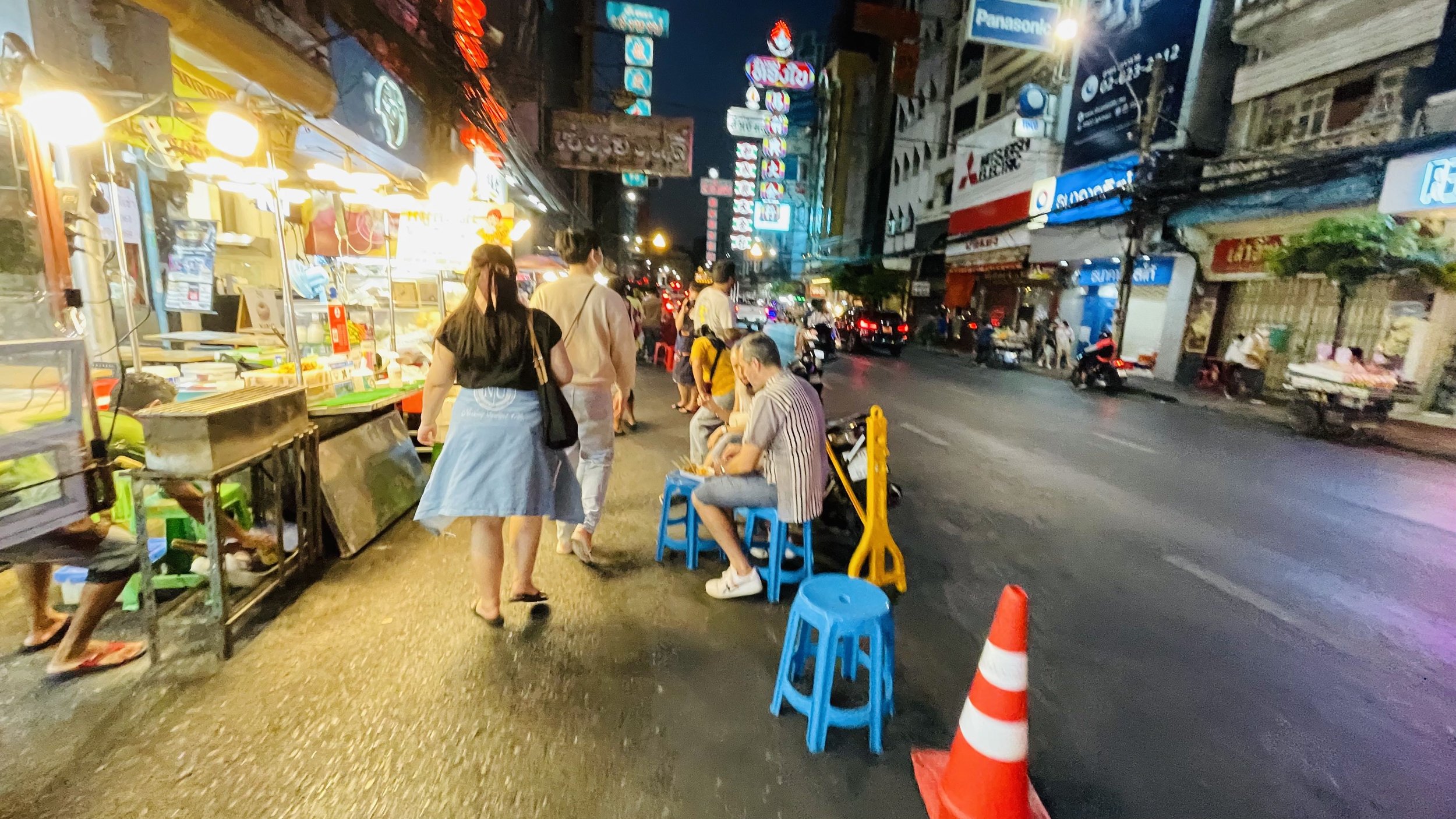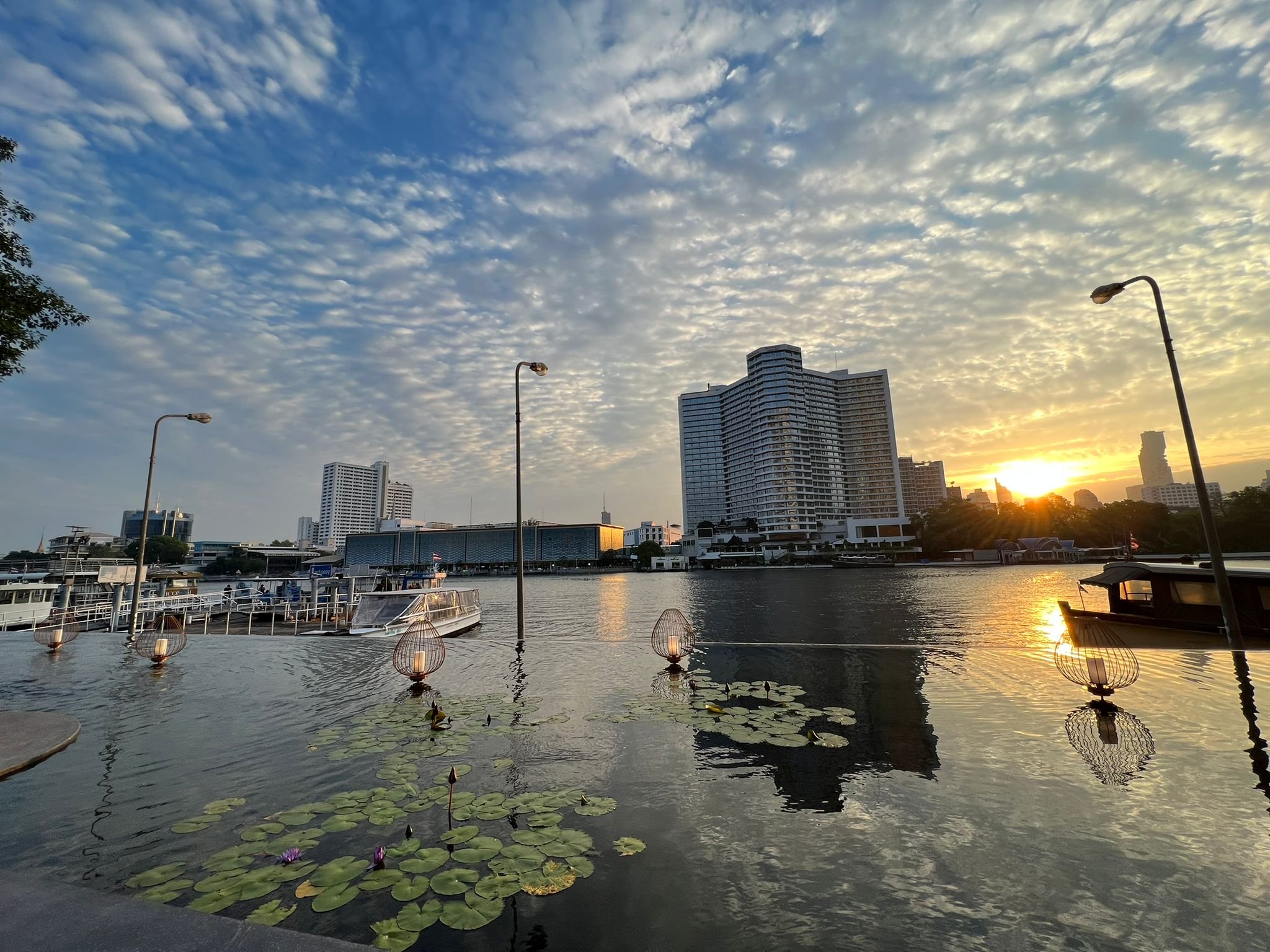Thailand, Bangkok, the bridge, the waterfalls, the art, the silk, the Giant Buddha.
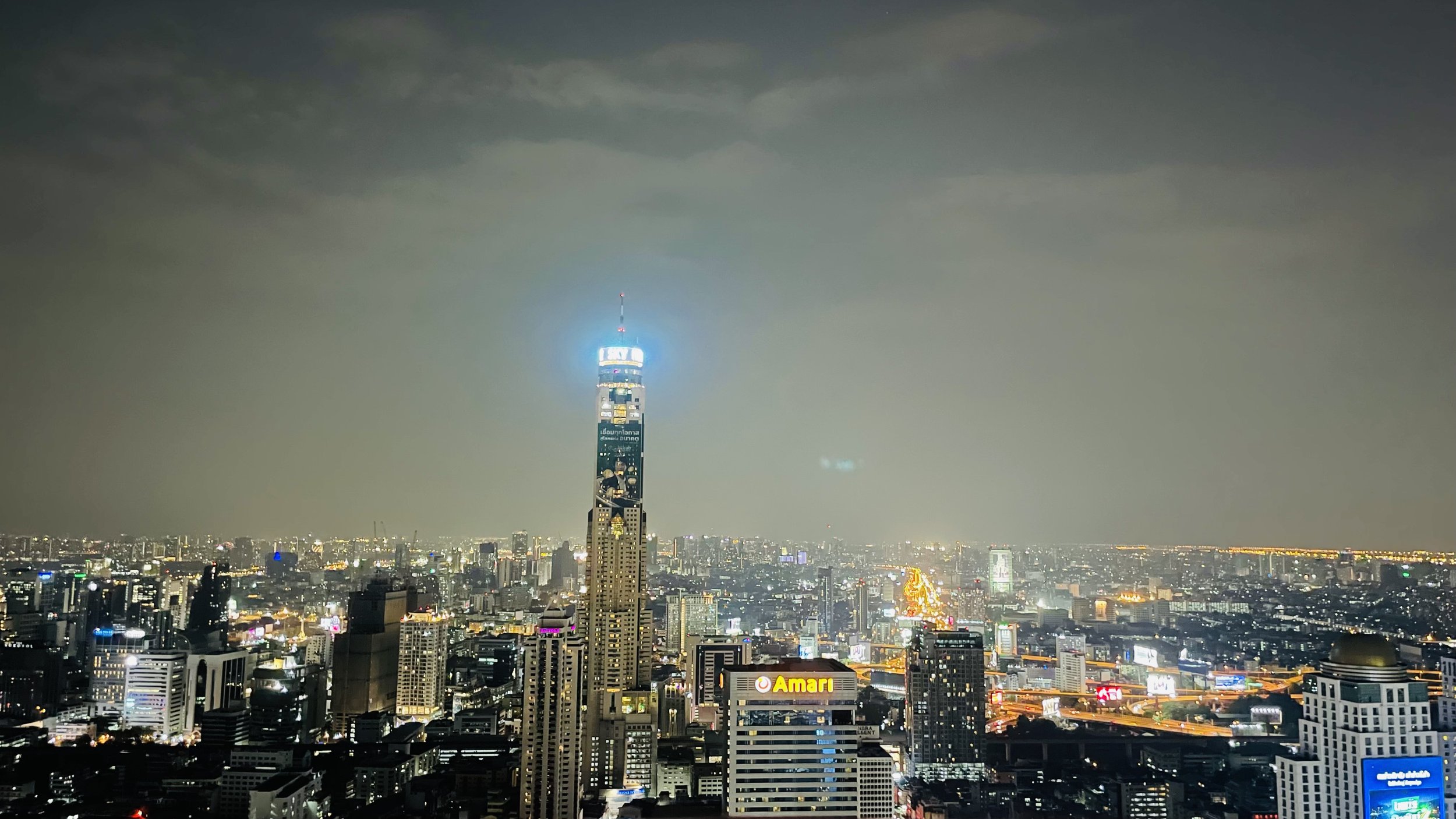
Bangkok in the Night, picture by popcinema.org © all rights reserved
Thailand, Bangkok, the bridge, the waterfalls, the art, the silk, the Giant Buddha.
It takes just over a hundred kilometres to drive from Bangkok to Kanchanaburi. An essential journey for two main objectives.
The Bridge on the River Kwai, picture by popcinema.org © all rights reserved
The first is to identify with Alec Guinness alias Ten. Col. Nicholson. The seven-time Academy Award-winning film, Bridge over the River Kwai is located in Kanchanaburi, Thailand. The crossing of the bridge on foot on the rails, to reach the other bank, forces to hum the march The River Kwai March.
The Japanese wanted to build a railway between Thailand and Burma. An infamous project. They had to lay tracks for four hundred and fifteen kilometres, digging the mountain in the middle of an unhealthy, inhuman, wild, dangerous jungle. Thousands of British, Australian and American prisoners were used, but most of all, many Asians were employed in forced labour.
The bridge was pulled down at the end of the Second World War by an Allied air raid. Only the outer spans were saved. (1)
The bridge today is a tourist and historical place, both to remember the cruelty of war and to explore a pleasant, quiet, lush environment.
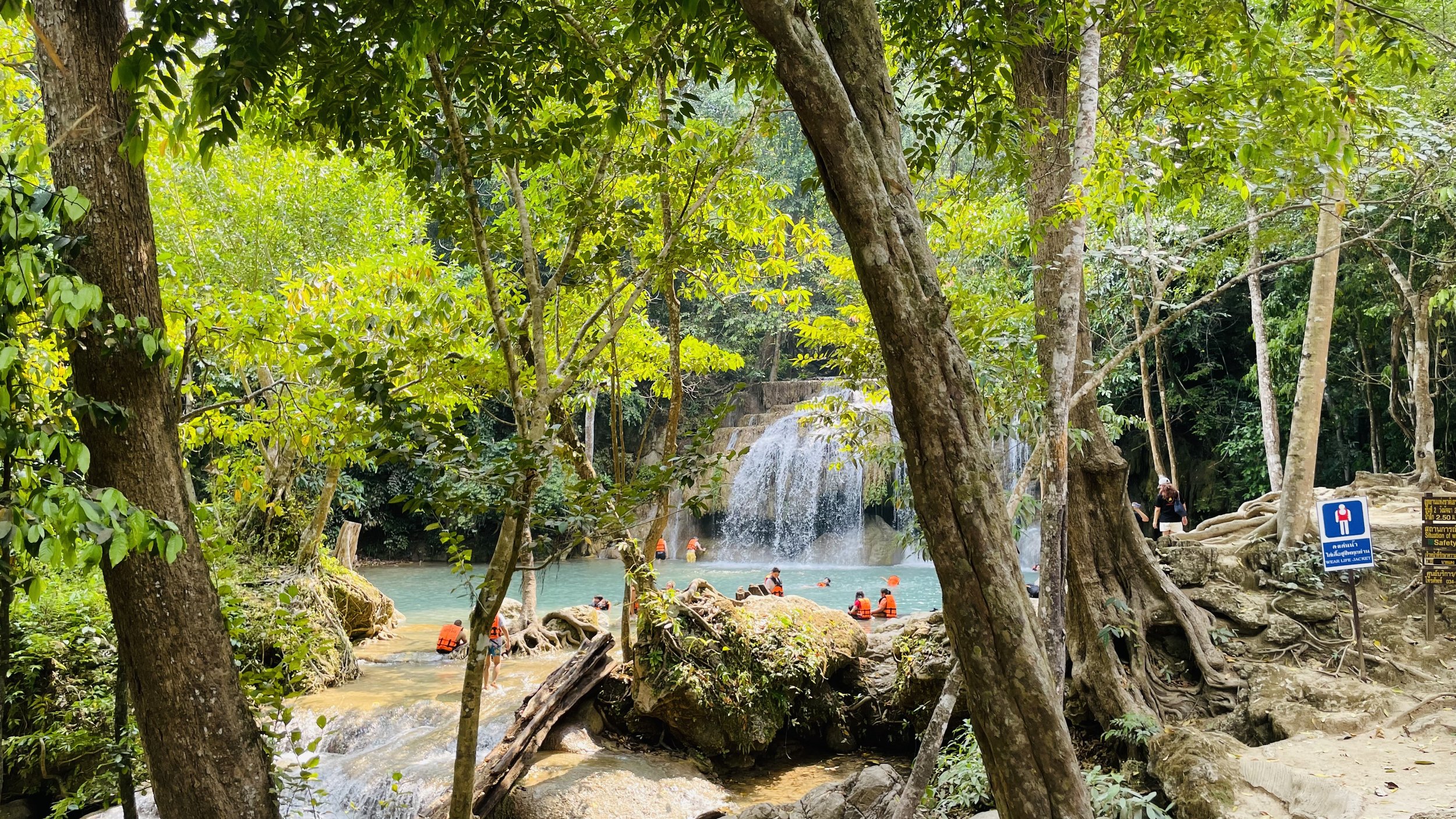
Erawan Falls, picture by popcinema.org © all rights reserved
Erawan Falls is the second reason for visiting. Water of the river descends, forming seven falls. A serene location, a fabulous natural park, fresh and clean water. Fish swim seraphically between the feet of the visitors. Spectacle of nature, suitable for relaxing and cooling off during the hot season.
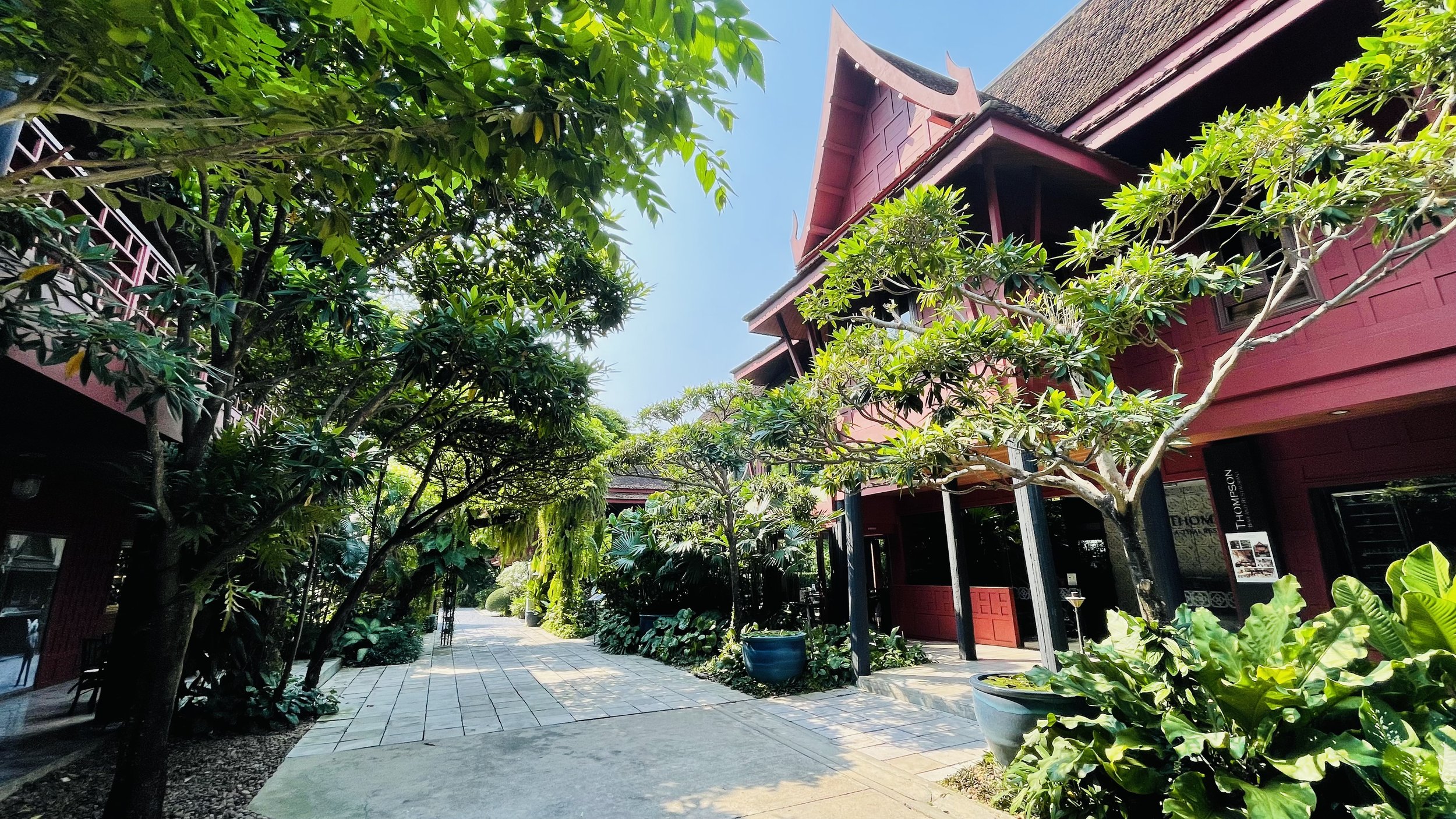
Jim Thompson House Museum, picture by popcinema.org © all rights reserved
Bangkok is not only amusing fun, it is also an increasingly frenetic and aesthetic cultural centre. It is rich with museums, such as the Jim Thompson House Museum. Jim Thompson was a CIA agent. In 1945, he landed in Bangkok to open an Agency office. A few years later, he began the industrial production of quality silk. His business became a well-known and famous brand. Now, his splendid house is a museum and an organization for meetings and conferences.
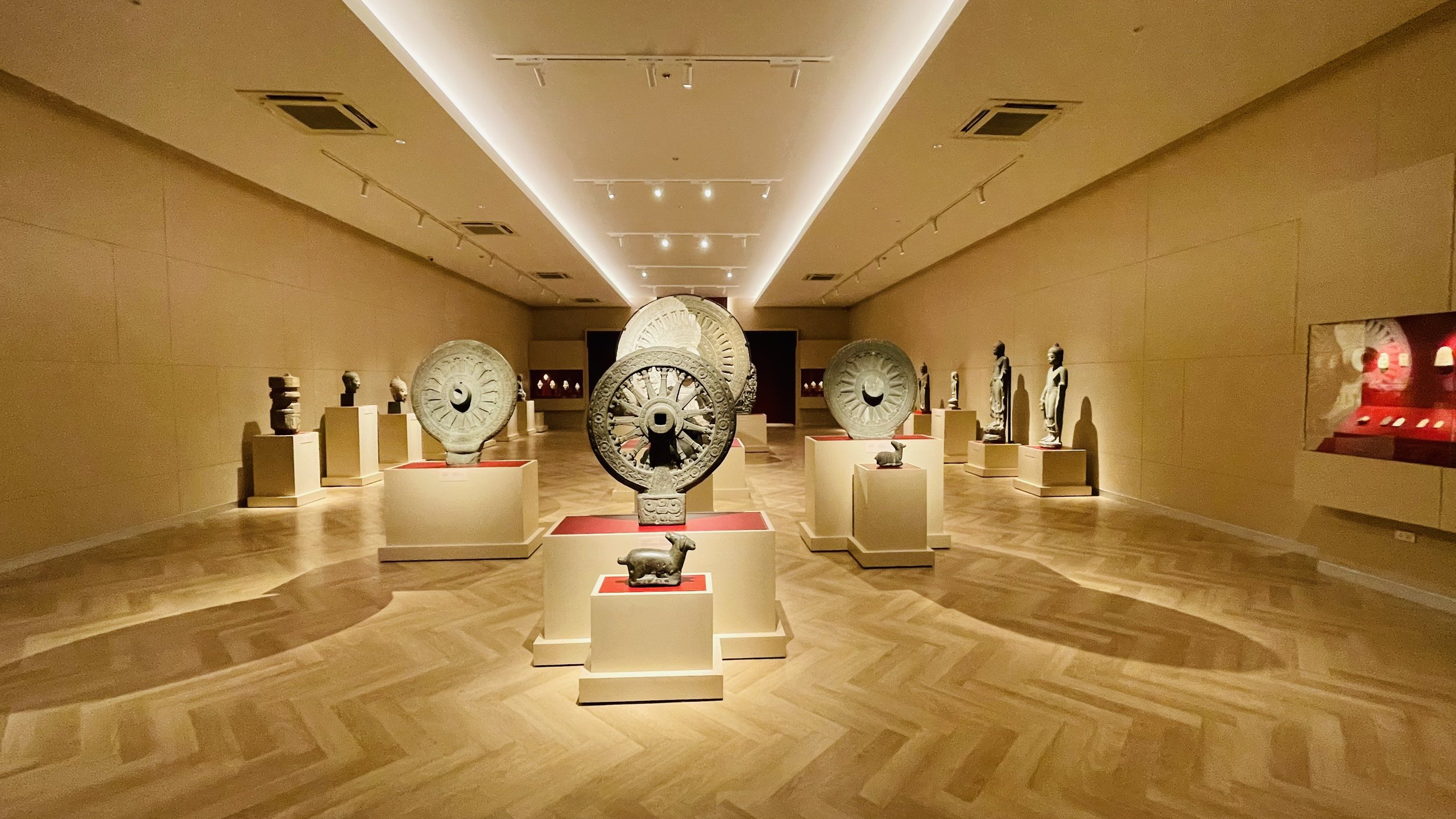
Hall with Inscribed Wheel of the Low (Dhammachakra and Deer), National Museum Bangkok picture by popcinema.org © all rights reserved
The starting point of all museums is obviously the National Museum. It is situated near the Royal Palace. The National Museum is an authentic journey into the culture and history of Thailand. From archaeological Buddhas brought from the Buddhist world to the thrones and the carriages of the Thai monarchy. It is fascinating and instructive to know the connections with very distant nations. Inside, there are gifts from international diplomacy: a statue of Napoleon Bonaparte, a golden gondola from Venice and a Winchester rifle.
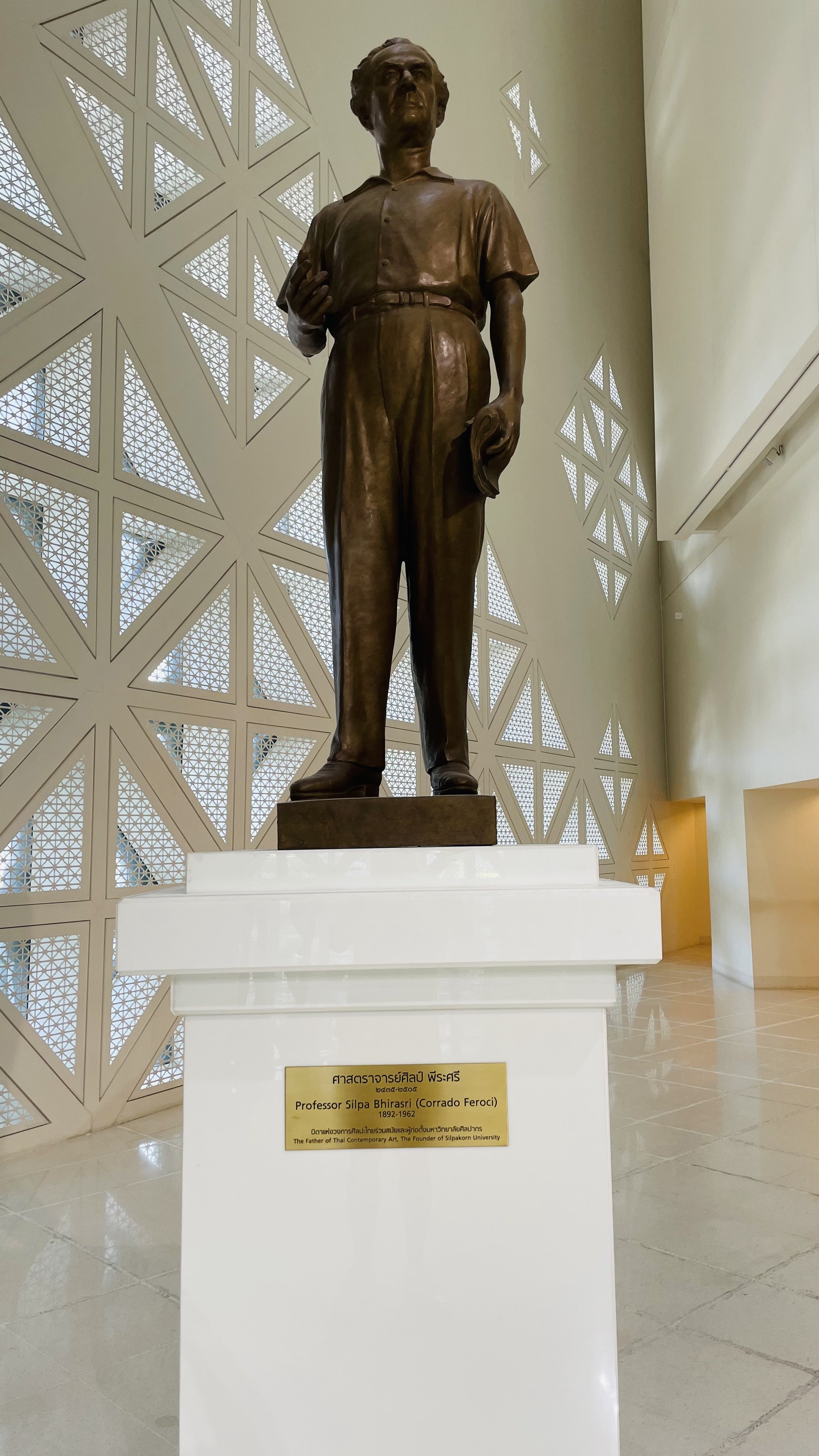
Statue of Professor Silpa Bhirasri (Corrado Feroci) in the Hall of MOCA Museum of Contemporary Art, picture by popcinema.org © all rights reserved
The first Academy of Fine Arts in Thailand was opened by Corrado Feroci an Italian artist and professor. He came to Siam in 1924 because he won a competition to design medals. He was seduced by Thai life and decided to live there. In 1943, he obtained citizenship and changed his name to Silpa Bhirasri. With his teaching, many Thai teenagers were able to learn about the Western arts. He was unanimously recognized for his contribution to spreading the study of art throughout Thailand. In his death, statues were erected in his memory, venerated and honoured by the students. One is at the entrance of the MOCA Museum of Contemporary Art in Bangkok.
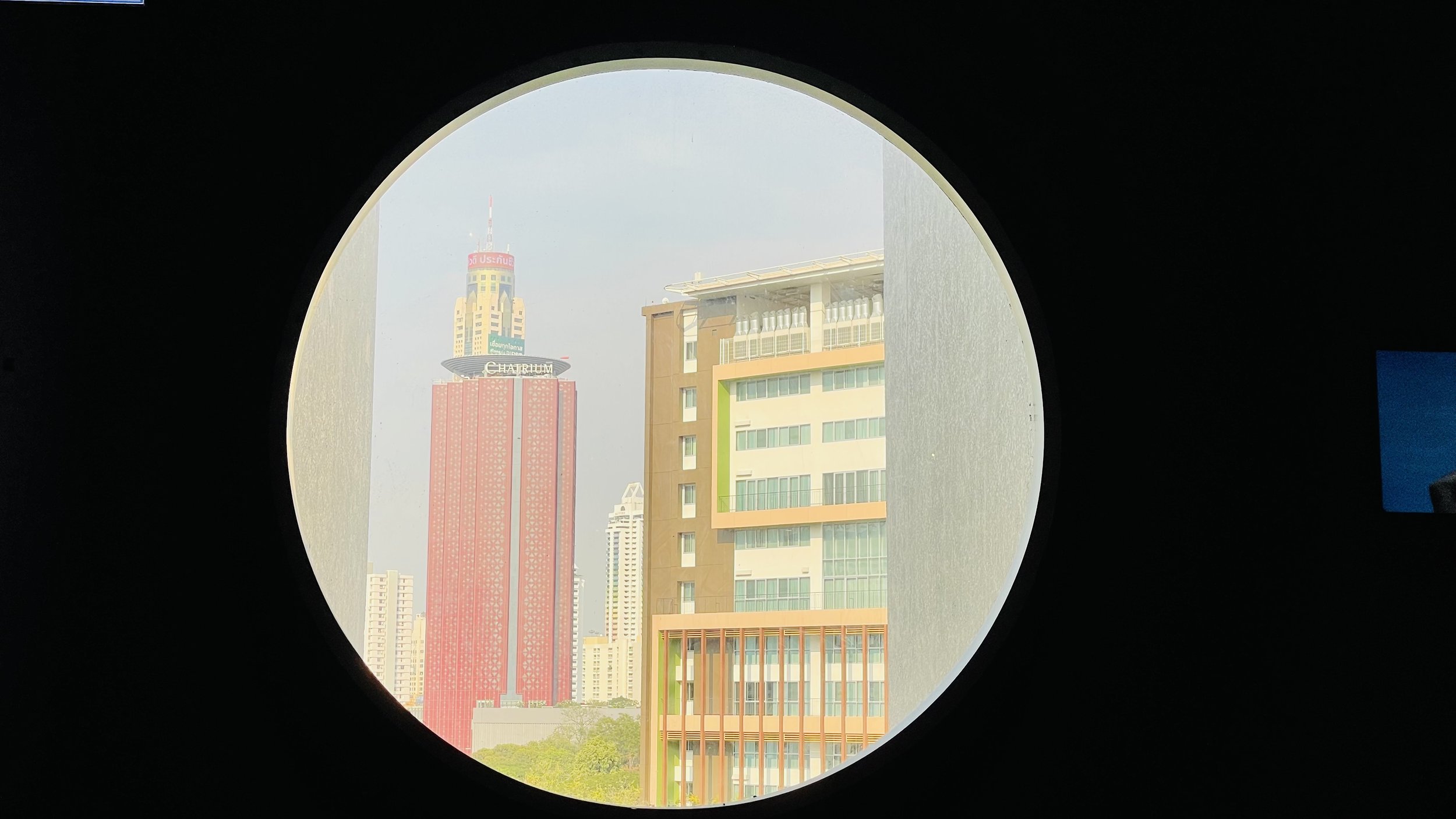
BACC Bangkok Art and Culture Centre, picture by popcinema.org © all rights reserved
Contemporary art has its epicentre at the BACC Bangkok Art and Culture Center. It is next to MBK, a popular Bangkok mall. It is a fashionable, white, progressive building built without repudiating the traditions of the country. It consists of nine levels, two of which are underground. In the circular space, there are always current and animated art exhibitions. After going up an elegant open staircase, there is the top floor, from which there is a total observation of its roundness, like a modern stupa. It is not only figurative art but also cinema, auditorium, theatres, library, convention room. There are many unusual shops which sell artistic objects, not particularly touristic but beautiful and tasteful. Besides, there are typical bars with local organic products from the countryside.
Paintings, statues, games, contemporary art represent the dynamism of Thai culture in search of connoisseurs. Art is observed and sold. (2)
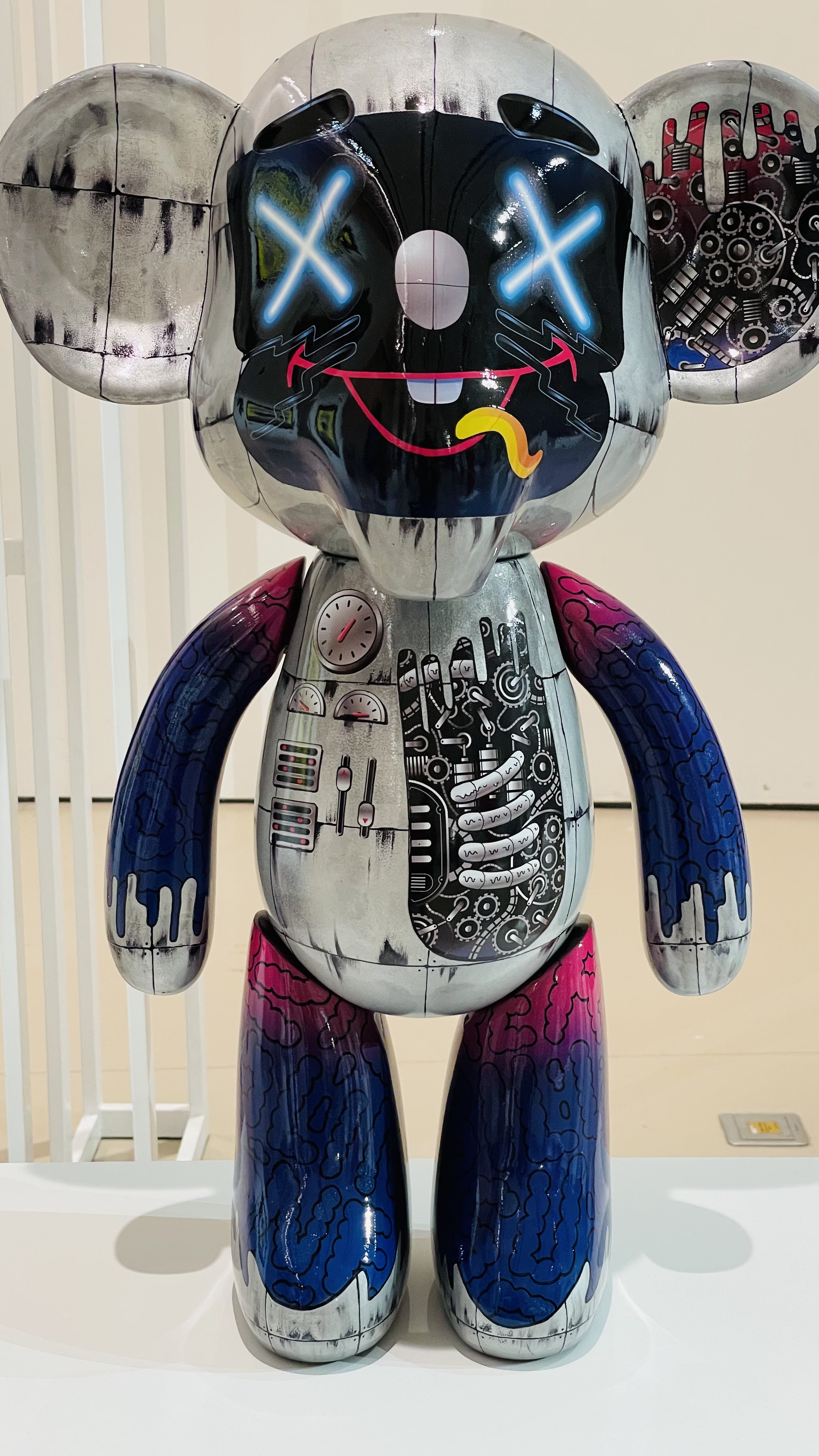
Thailand Digital Arts Festival 2022, Iconsiam, picture by popcinema.org © all rights reserved
In addition to museums and galleries, art exhibitions are widespread in shopping malls. The stunning Icon Art and Culture Space on the 8th floor of Iconsiam on the bank of the Chao Phraya River. A vast surface, exceptional and ideal for art festivals. In March 2022, it hosted the TDAF 2022 Thailand Digital Arts Festival 2022. A young and evolved demonstration, with works of virtuous and original elegance.
However, contemporary art does not transcend tradition. The artworks are classical, mostly related to Buddhism and historical events such as the ancient capital of the monarchy, Ayutthaya.

Waty Aichaimongkhol, Ayutthaya, picture by popcinema.org © all rights reserved
By the middle of the fourteenth century, one major Tai empire emerged the Kingdom of Ayutthaya.
King Ràma Thibodi I founded, in a strategic location, Ayutthaya beginning the extension of his domains and the development of the city.

Ayutthaya, picture by popcinema.org © all rights reserved
In 1767, Ayutthaya was totally demolished by the Burmese. Later, it was abandoned.
The few remains of the temples and three royal palaces are evidence of the ferocity with which the Burmese destroyed it. These ruins provide archaeological proof of the splendour reached by Ayutthaya.
Politically, Ayutthaya was more than just the centre of government. It was the hub of commerce. It had an immense fleet. Delegations came from Asian and some European countries: Portugal, Holland, France, England. An extraordinary religious freedom spread. Along with the European expeditions, French Catholic ecclesiastics arrived. In complete independence, they founded convents and missions. Buddhism was logically the splendour of sacred art. In the city, there were one thousand seven hundred pagodas with about four thousand statues of Buddha.
Leaving Ayutthaya, the royal family created a new capital in 1782: Bangkok. They followed the same architectural criteria as Ayutthaya. Princely palaces and temples have a constant presence in the structure of the city. Each area has many temples: small, large, very large, grandiose, valuable; perhaps twenty-six thousand in Bangkok and around. (3)
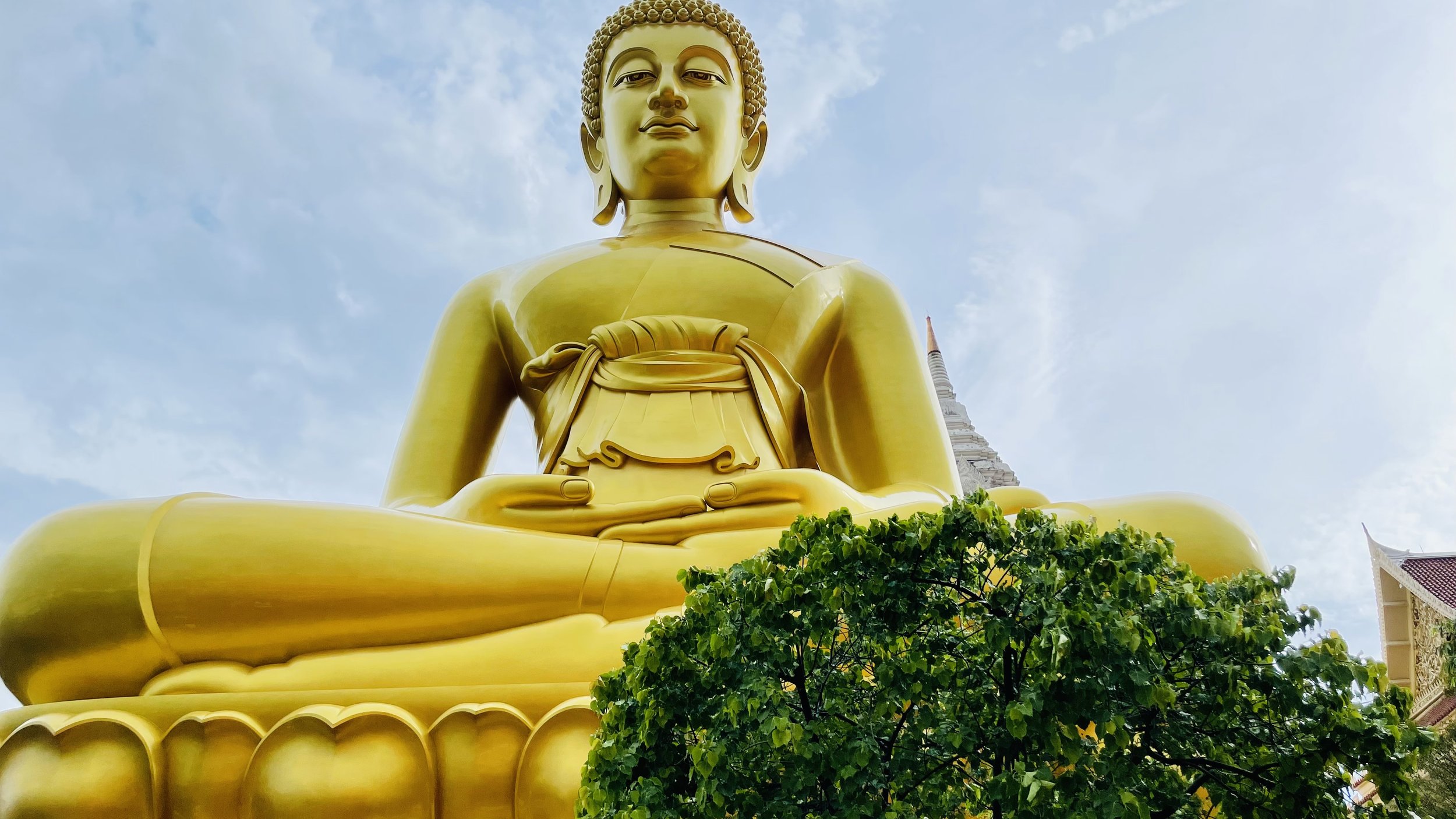
Giant Buddha in Wat Paknam Bhasicharoen, picture by popcinema.org © all rights reserved

Reclining Buddha, picture by popcinema.org © all rights reserved
The raising of gigantic Buddha has found its apogee in Bangkok. Unforgettable is the sumptuous one of the reclining Buddha at Wat Pho. In 2022, the mammoth Giant Buddha was completed in Wat Paknam Bhasicharoen. The Buddha is sixty-nine meters high and is visible from many parts of the capital. Its vision is imposing, majestic, prosperous. (4)
It is the symbol of tradition. It has been perpetuated over time and in Thai civilization.
https://www.repubblica.it/viaggi/2010/09/13/news/il_ponte_sul_fiume_kwai-117044011/
https://popcinema.org/arte-cultura/early-years-project-2-anticipation
Bibliography:
Mario Lorenzato, La Thailandia (Siam) Breve storia religione, arte, letterature
David K. Wyatt, Thailand. A Short History, 2003, Second Edition, Yale University Press
Author Roberto Matteucci
Click Here for Italian version
Credit photo: popcinema.org
Erawan Falls
Jim Thompson House Museum
National Museum
BACC Bangkok Art and Culture Centre
Icon Art and Culture Space Iconsiam
Ayutthaya
Wat Paknam Bhasicharoen
Temples in Bangkok
Bangkok
Video






https://www.facebook.com/roberto.matteucci.7
http://linkedin.com/in/roberto-matteucci-250a1560
“There’d he even less chance in a next life,” she smiled.
“In the old days, people woke up at dawn to cook food to give to monks. That’s why they had good meals to eat. But people these days just buy ready-to-eat food in plastic bags for the monks. As the result, we may have to eat meals from plastic bags for the next several lives.”
Letter from a Blind Old Man, Prabhassorn Sevikul (Nilubol Publishing House, 2009)































































